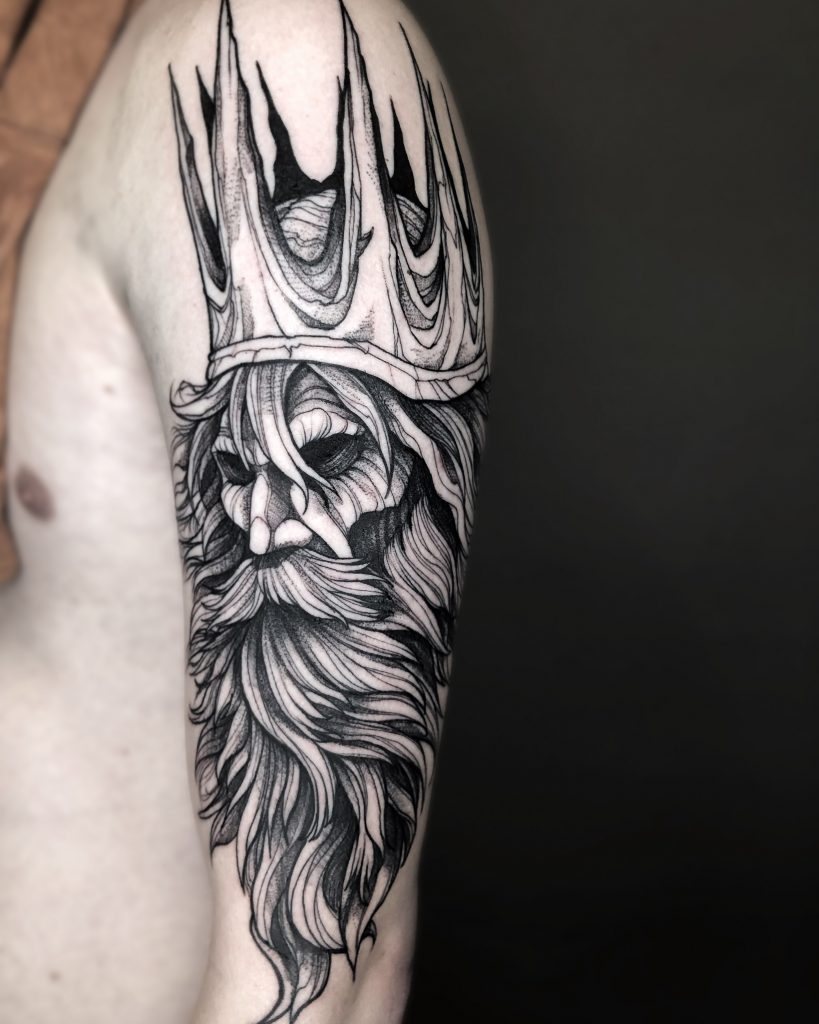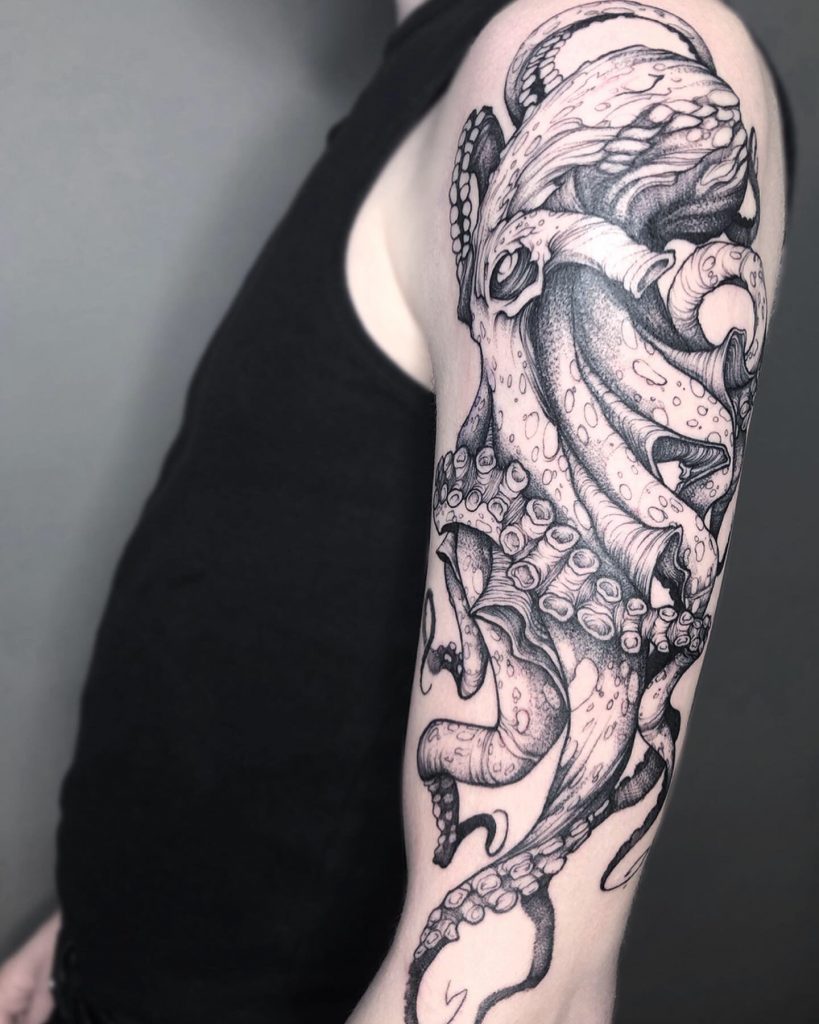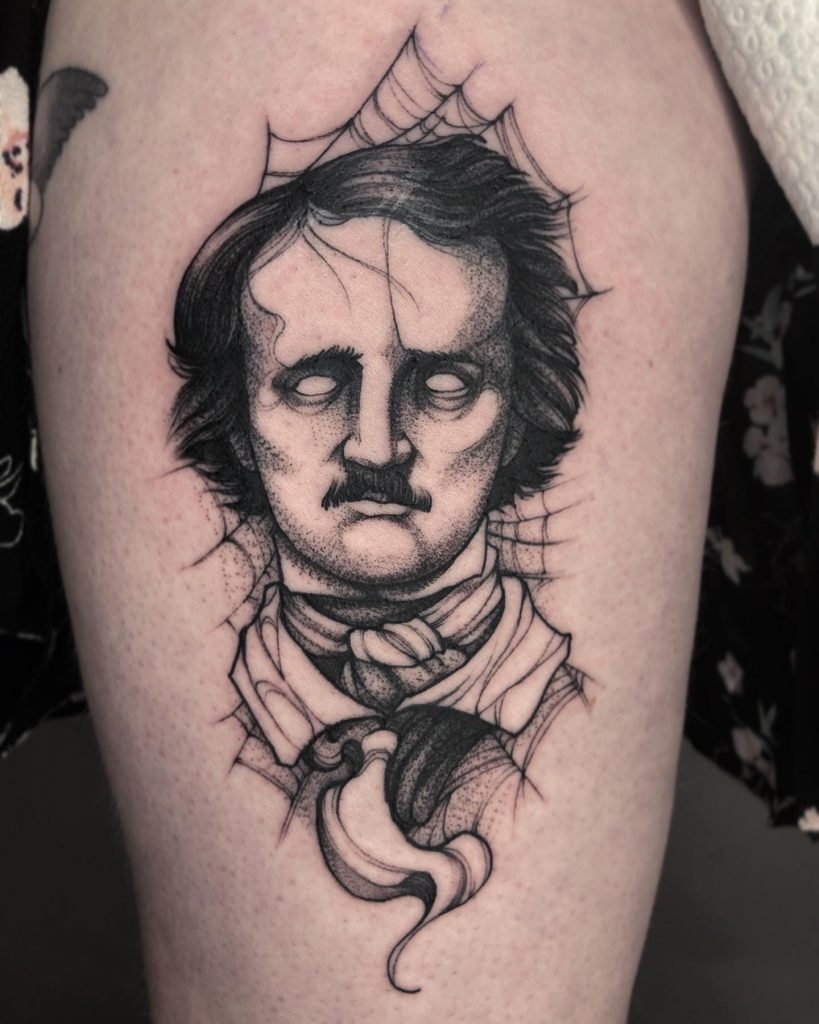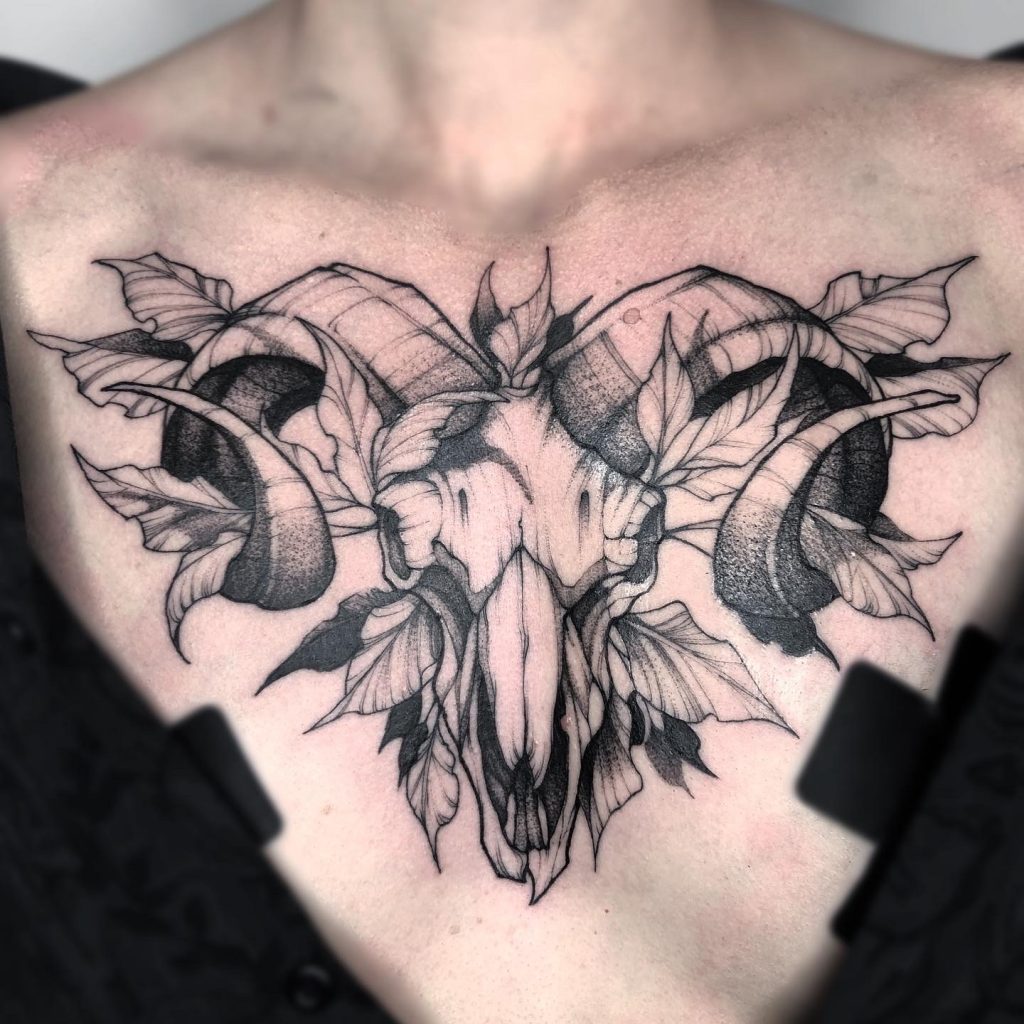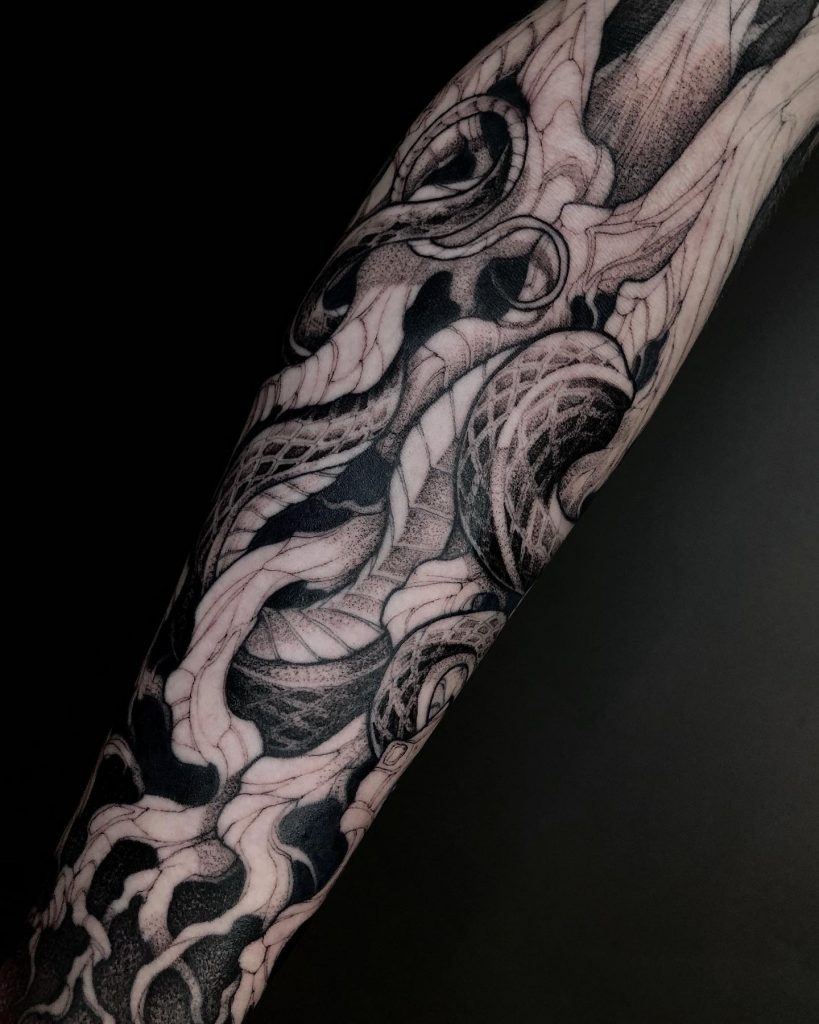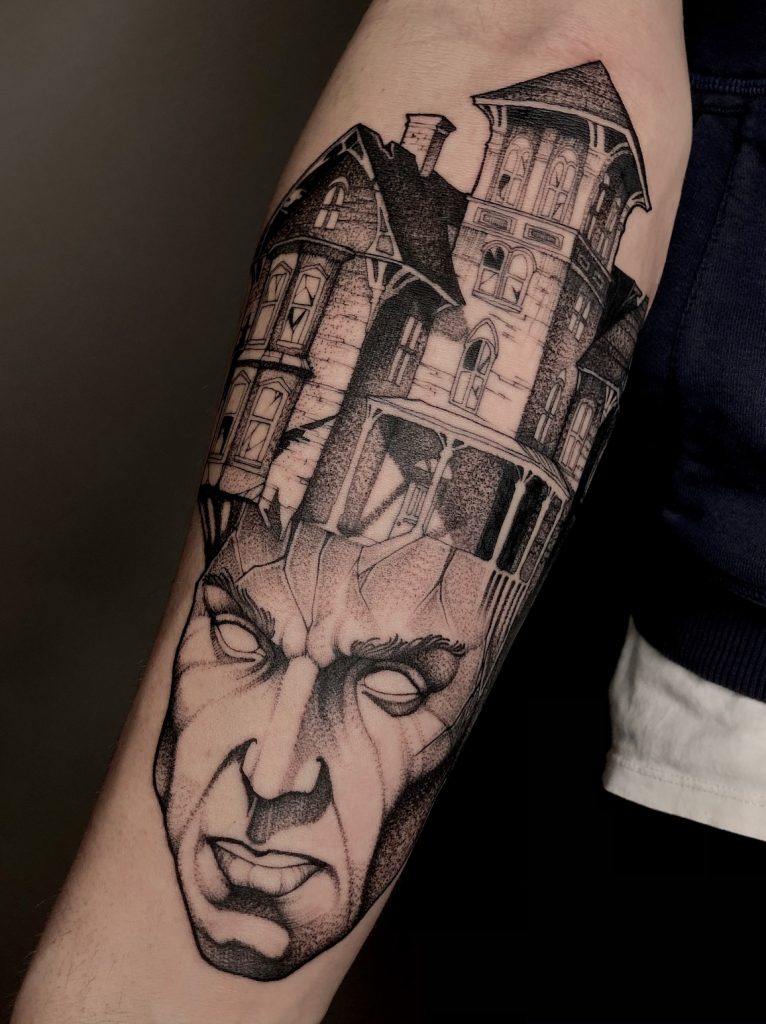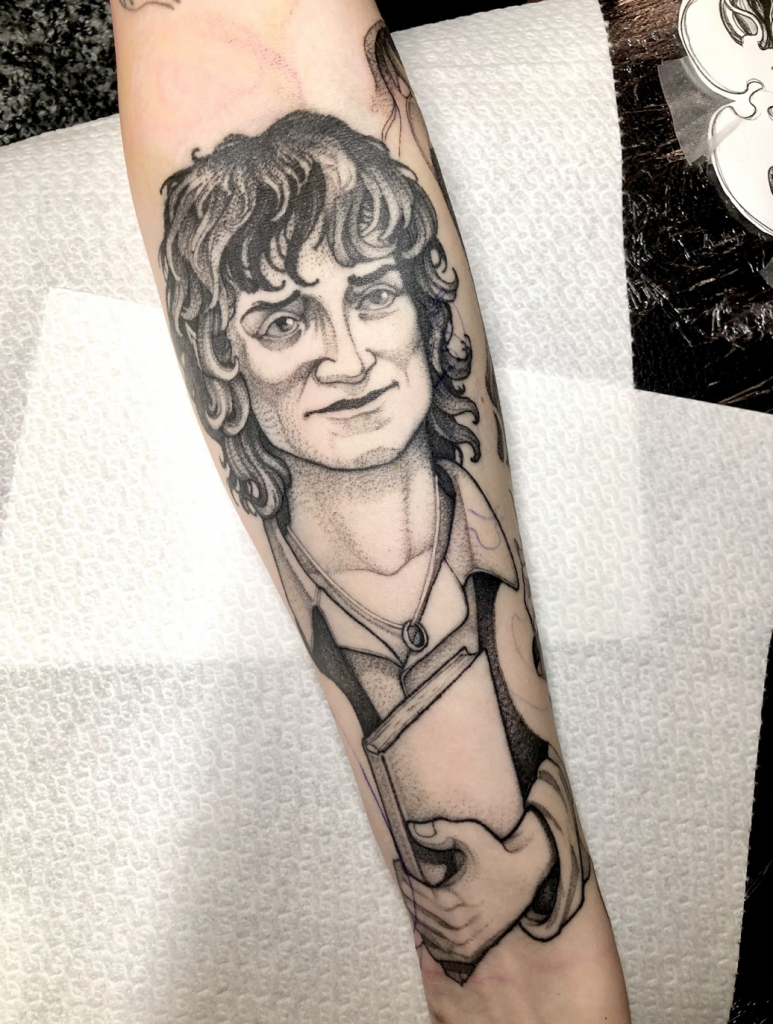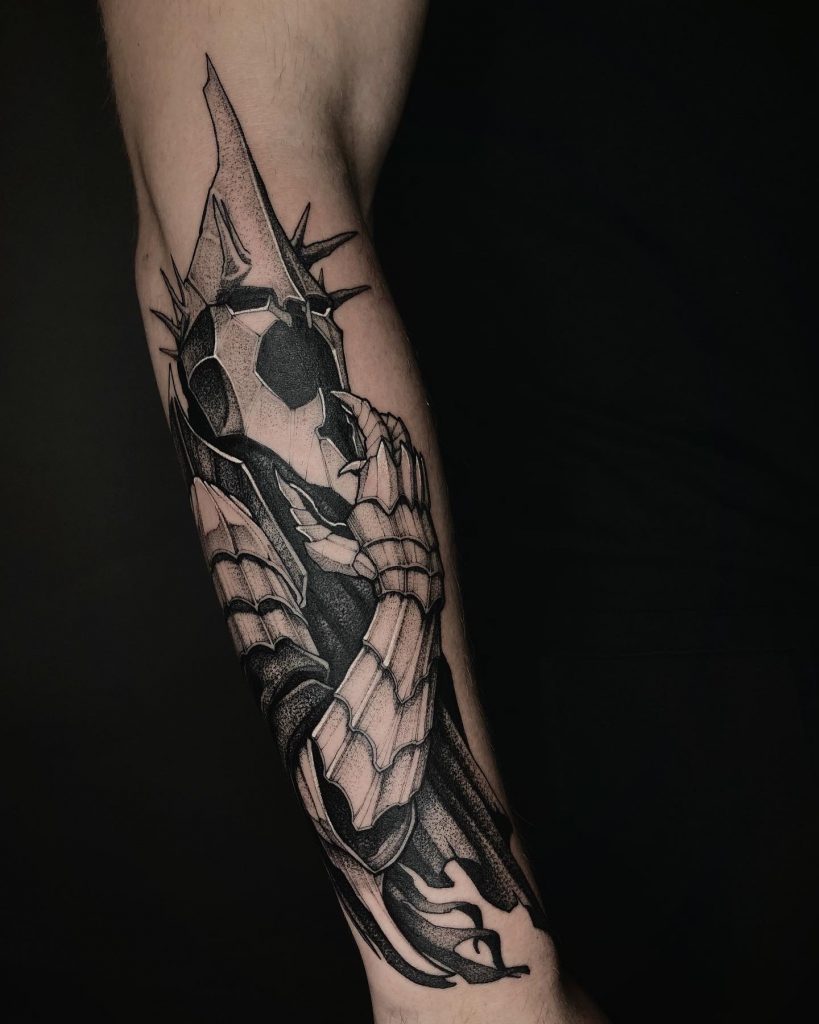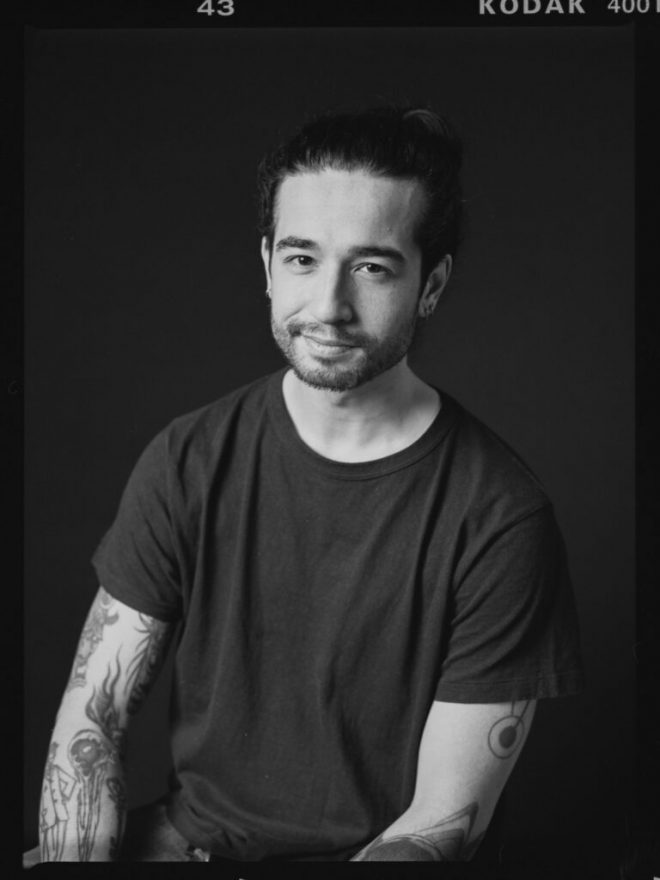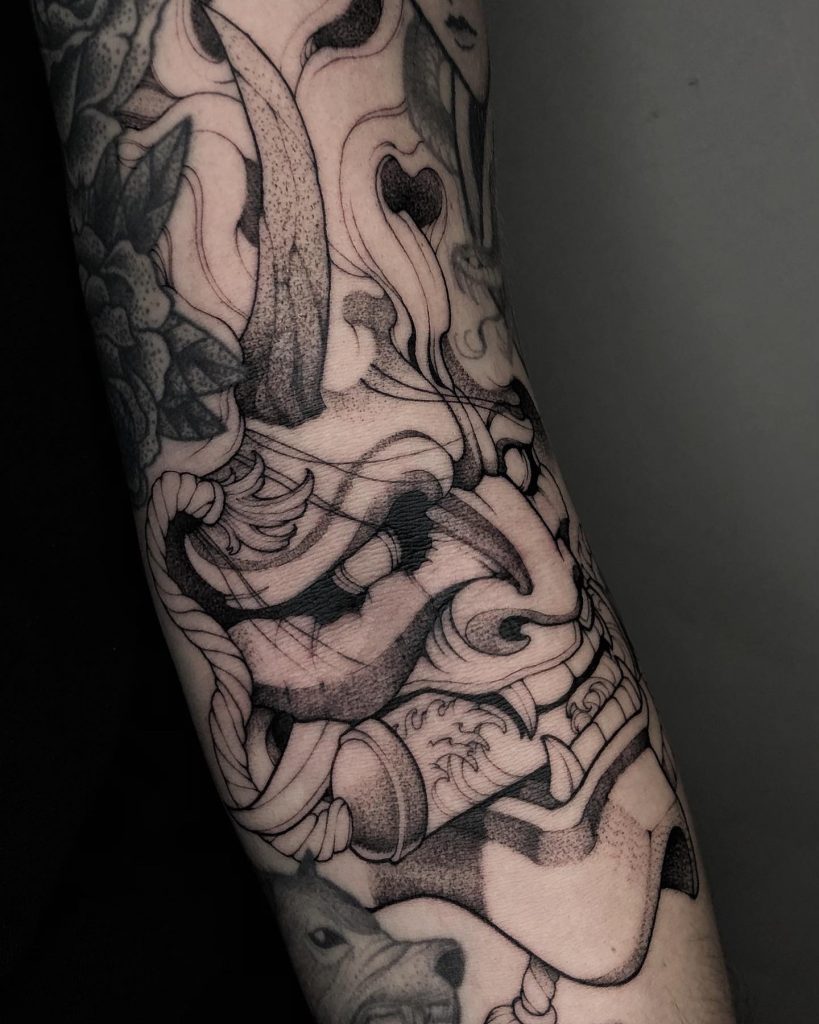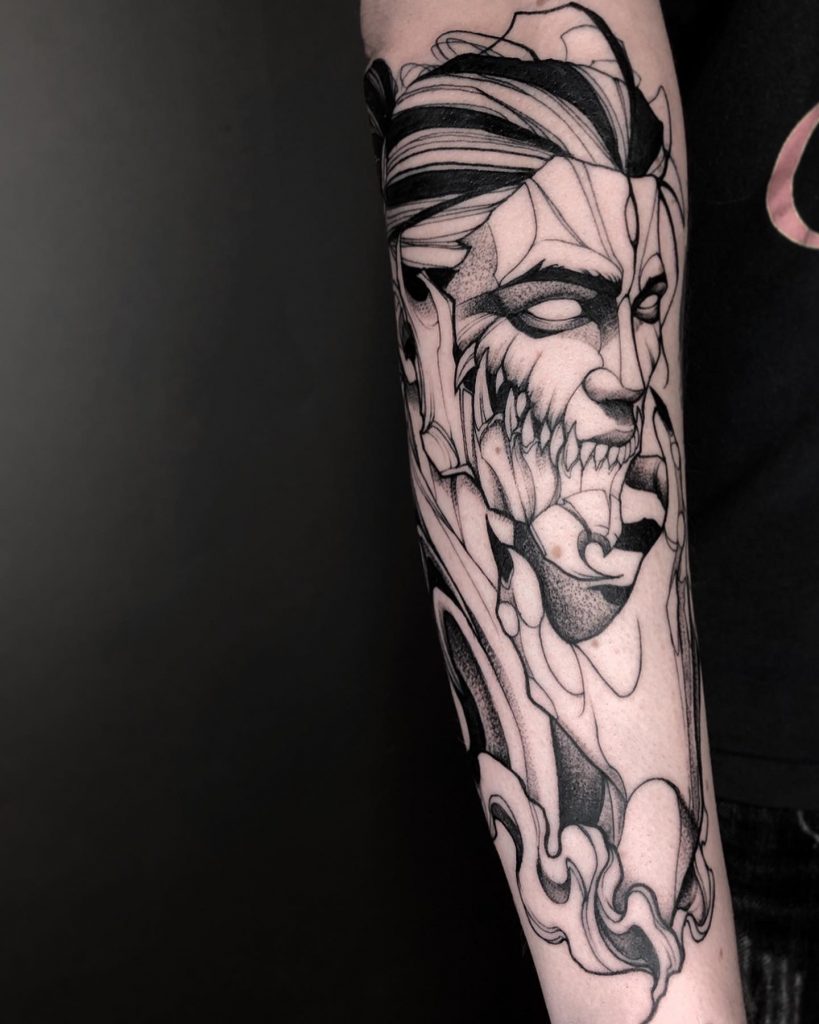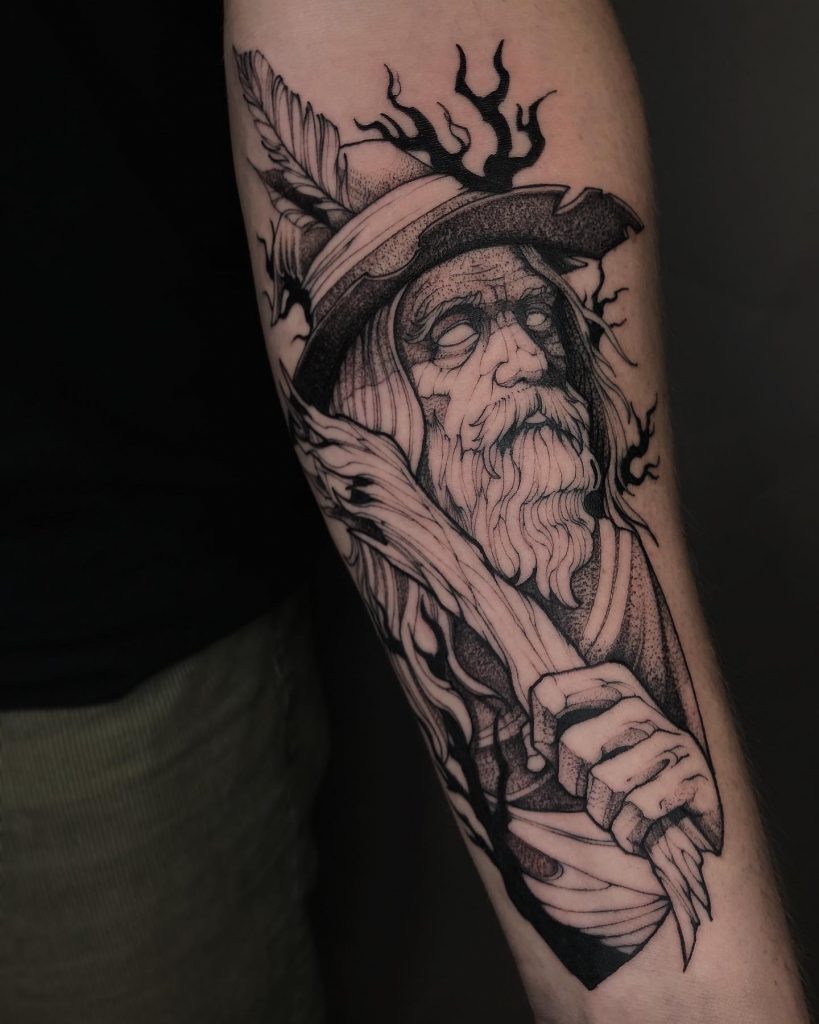When we were deciding on the first guest for our interview series, there was one person who immedeately came to my mind. Mitchell Keanu is an illustrator and tattoo artist at BlackBear Ink (in Eindhoven, the Netherlands), who not only creates masterpieces of blackwork on skin and paper, but also has the kindest and most down to earth personality, which is so important, if you consider that we spend a lot of time with our tattoo artist.
In this interview we talked about his journey, from drawing as a child, to illustrating and tattooing professionally, his creative process, how to deal with creative blocks and advice for anybody, who'd be interested in getting into art and tattooing. Thank you so much, Mitchell Keanu, for sharing your journey with us!
── First of all, thank you so much for being here! You’re our first guest and I'm really excited and happy that it's you - because we've known each other for quite some time, you being my tattoo artist (laughs). Would you mind introducing yourself to the readers who don't know you yet, so they have a better idea of who you are?
Of course! My name is Mitchell Keanu. I've been a tattoo artist for about I think 2 to 3 years officially and I've been tattooing for a little bit over four years now. Before I was a tattoo artist, I went to the Art Academy here in Breda, which is a small city in the South (of Netherlands). I've successfully finished it, even though with some trial and error (laughs). The entire school took about four years and I studied illustration there. Most of the people in my class had a good understanding of how the entire process of an Art Academy and the studies worked, but I sometimes had some doubts and insecurities about how it all went and how the entire system was working for me. Because on the one hand they were trying to teach me something, on the other hand they were criticizing my work in a way that sounded more personal… like it was personal preference, you know? But all in all, I finished it and never stopped creating and drawing ever since.
── Awesome, that sounds really good and we will come back to your studying as well. But first, in our magazine we want to share the artists journey to motivate and inspire people who just start out…because, as you might have noticed, people on social media usually only share their "best of“ — I do the same so no judgment there — but when you first start out and look at other people, you see only this “best of“ and sometimes I think we forget that people who are already successful in what they do also have been where we are right now.
Exactly.
── So maybe if you go back, how did you get into drawing in the first place, maybe when you were small. How did your journey begin?
I have been drawing since I was really small. I think from the age of somewhere between five and six or so. And back then, which is of course very obvious when you're a child, you have no idea when you're good or doing something great. You're just doing it for the sake of doing it, for the pleasure of it. And I always thought it was very soothing and relaxing, because I'm a very…and back down even more so, a very shy introverted kid, so when I had my papers and my crayons and my markers and all of that, it was just me in my own little world, creating stuff and let my imagination flow. And it wasn't until about somewhere during elementary school, when people started saying things like “your work is pretty good!” and I had no idea what they were talking about, because I had no idea what was good and what wasn’t. I mean, if I were to draw a flower or a hand, it might resemble something in real life in some way, but nowhere near as good of course. And I think that's when I started to understand “okay, so when something is pleasing to the eye or something resembles something from life, it may be considered good“. So that's when I really started to practice. And from an early age even my parents were always trying to help me through that journey: always being honest, not just saying “oh, that looks so good!”, but they were always giving feedback, in small ways and on a level you can give it to a child, because I was very young. I've never stopped drawing actually. I just kept working on my craft, even when I went to high school and other schools. I haven't started studying in art classes or anything, I just went to school, I did my thing. It was only after high school that I really started to look more into creative education and that's when it really took off.
── Is this when you decided that you want to do it professionally or did you just start learning about it more, not knowing whether you would actually do it as a job later?
Well, I did know. When I was younger, I always wanted to do this professionally, but I never knew how you would do that, because I didn't know about what kind of jobs existed around drawing in general. I didn't know what an illustrator was. When I was young I only thought, “I like comic books, so I just want to do that”. I wanted to draw comic books for a living and I didn’t know how it worked, but I thought that's just what I wanted to do. And when I was getting older, around the age of... I think 16, that’s when I had to actually start choosing a school that's more fitting to a career path. That's when I thought “okay, maybe I need to find a way to do this professionally or at least learn how to do this professionally“. There was a slight off track when I was choosing schools, because when I went to Sint Lucas, which is in Boxtel - it's very close to Eindhoven, I started going more into the direction of animation and video editing and web design, because that was as close as I could get to doing something with drawing and imagery. They also had graphic design, but graphic design was more about making cool magazines and posters and all that. It was more about letters and shapes and I actually wanted to do something more with creating form and movement, so as I thought that animations were also cool, I decided to just do that. After finishing that school, that's when I went to the Art Academy. And then I was thinking that animation was fun and all, but it didn’t have the same feeling for me as illustration and drawing in general. So that's when I really started to realize “okay, you can work as an illustrator, there is a job description for that”. The only downside is: it's not as easy as a job in accounting or as web designer, where you can go to an office and request a job and get on your way. It's a lot harder than that. But I decided that's a problem for later, so I just wanted to focus on my skills: in owning them and practicing them and that’s when I really started to go through that path.
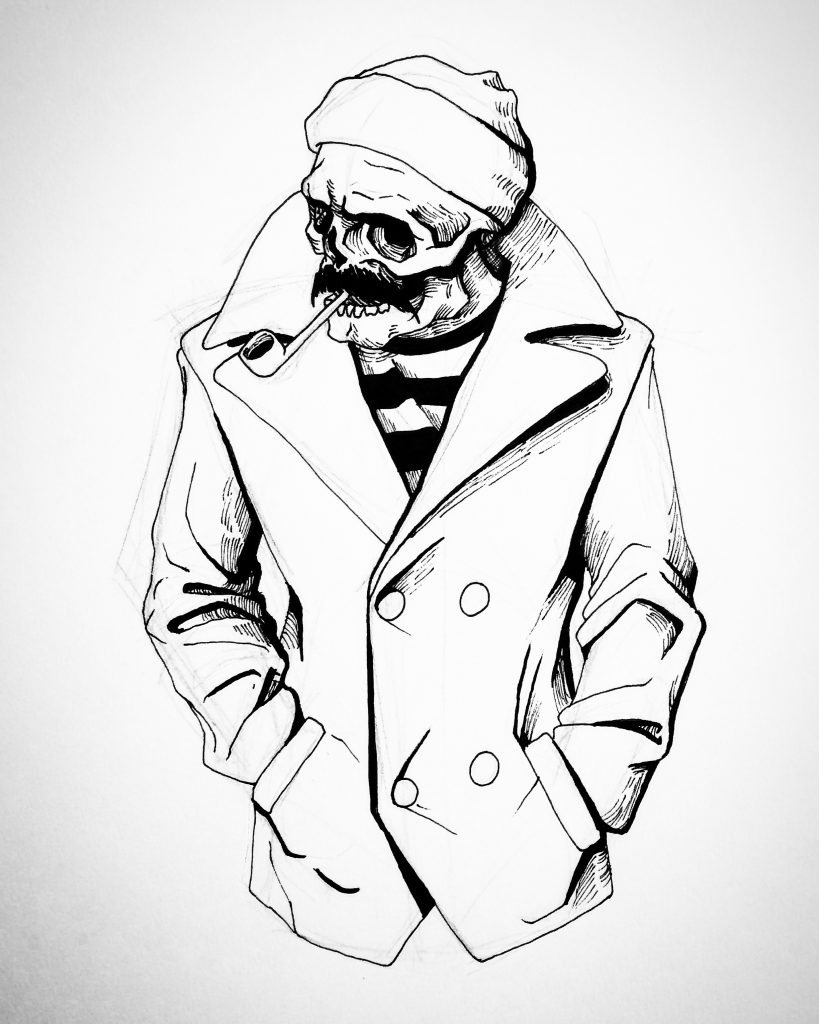
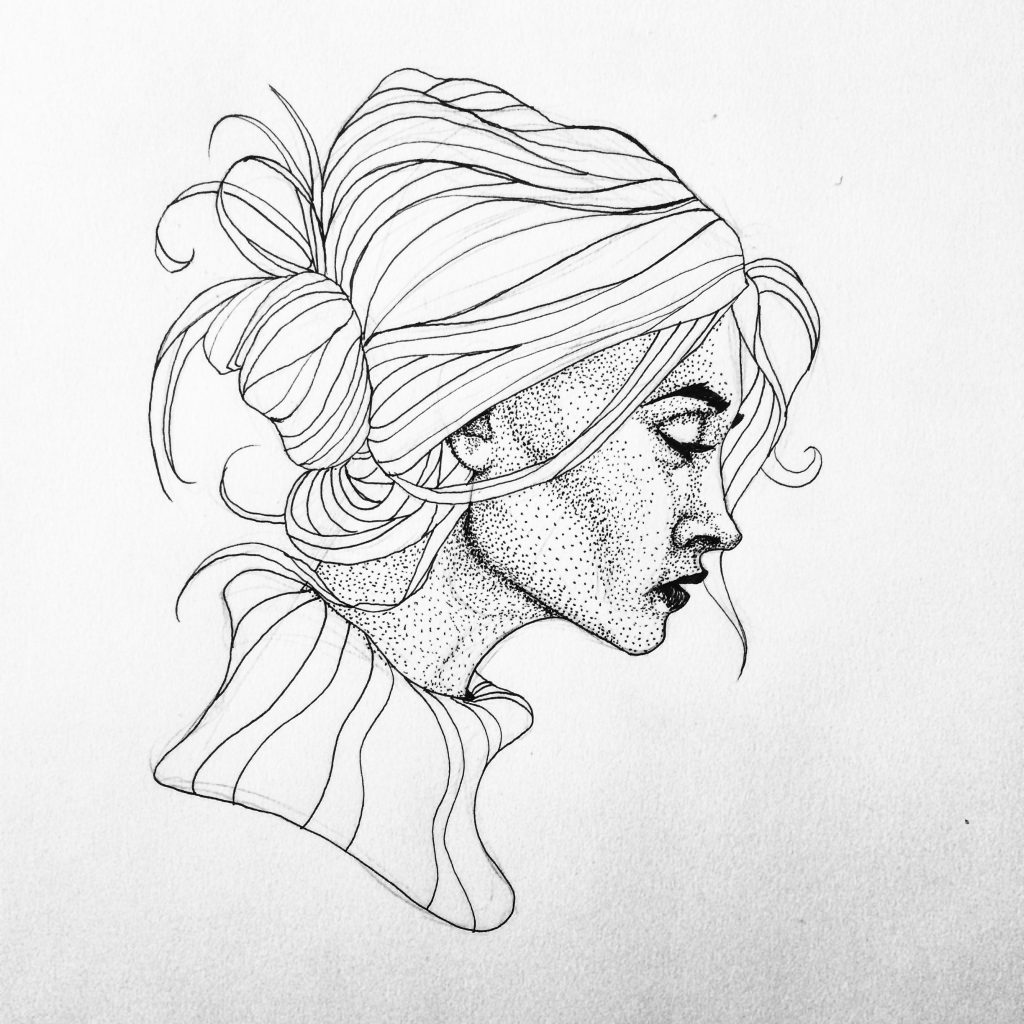
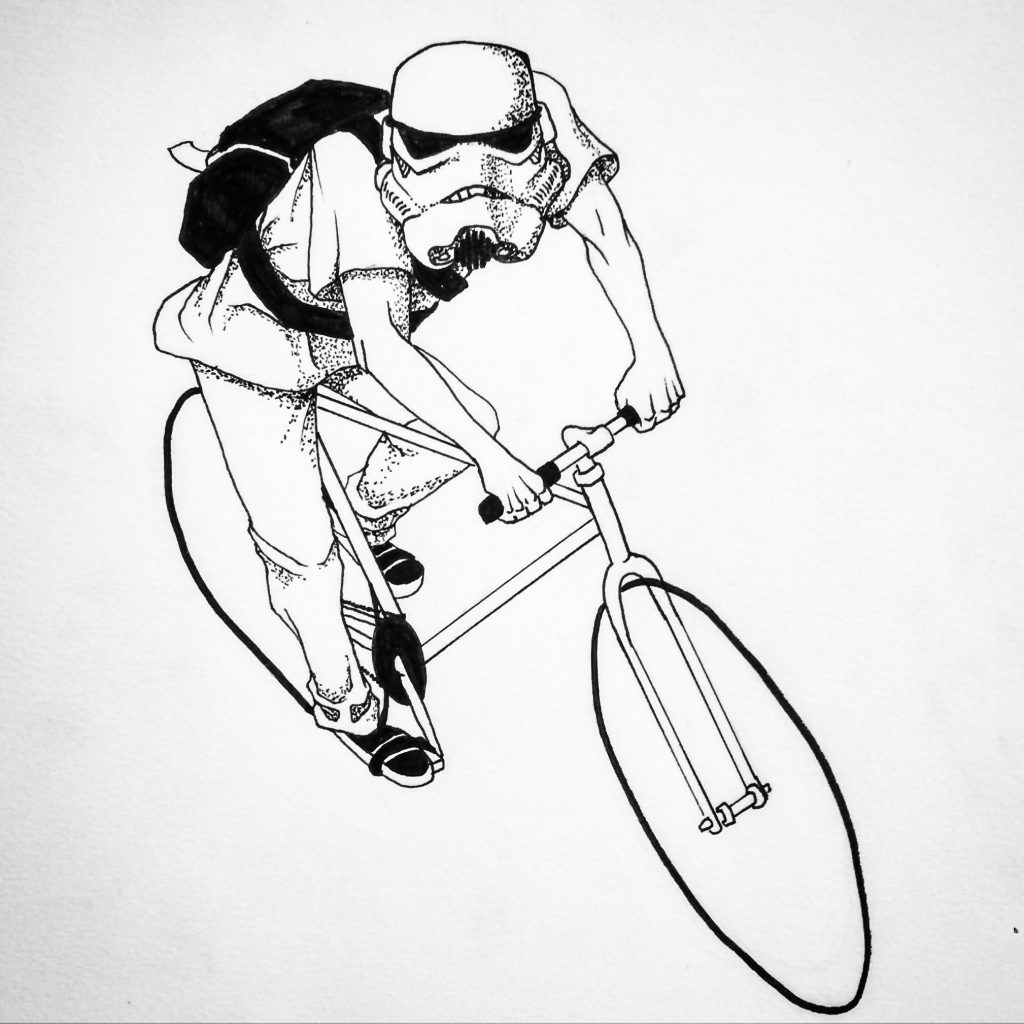
── Awesome. And as you've mentioned before, what were your struggles during the time at the academy and do you still think it's good that you went there? Because I think many artists…and I have an artist friend as well who doesn't know “Do I need to go to art school? Can I do it on my own?” because the creative world is really unpredictable. You never know how you can make it and what you need to do. So what are your thoughts on that?
Well, when I was going to the Art Academy I encountered that the first year is sort of an orientation year. The first half you're just doing everything from doing sculptures, writing or painting. And we didn't really have specific classes. It was more conceptual in a sense. So for example, one of the classes we took was called “3D something something“ or "4D something something“. 3D was more about making things in 3D and 4D was more about time and movement, maybe with imagery or recording or animation. And then 2D is obviously more like painting and drawing. So those were the classes and assignments that were a little bit specified on that. But it was way too abstract for me, what I was supposed to do. Maybe it was because of the school I went to before that or maybe because my brain works that way, but I needed some clarity. I thought “just tell me what to do, what direction I have to go, and I’ll do it!“ and they were like “try something with this and try something with that” and it was all kind of unclear, while I kept thinking “TELL ME! I don’t know what you’re trying to tell me!“. And that was the first year. And then after that you actually choose your path, which direction you want to go through and I chose illustration. And then along the way it became a lot more focused of course, but that was when I noticed they were facilitating a lot of knowledge. If you want to learn about Darkwork or Pointillism or painting with oil paint or acrylic, they showed once or twice how to do it and how it works and then that’s it. And then we moved on to the next thing. I felt like they were touching the surface of some subject matters and then afterwards we had to work it out for ourselves. And that’s when I learned that on one hand the teachers facilitated a lot, but on the other hand they didn’t really drill us like the classical art academies from back then. And I had some...not necessarily some trouble with that, but I noticed that it became hard for me to actually choose something for myself and I wasn’t sure whether I find something fascinating or if it's the teachers facilitating it. And in a way I found it really hard to just say “ok, I want to study this“. For example, when they first showed us how Dotwork and Pointillism work, I thought it’s awesome, so I wanted to know more about it and do it more. But then they were like “so, next week you’re going to use chalks and charcoal“, while I thought “but we just focused on this, so can’t we just do this more?“. And then it hit me that if you wanted to know something you actually have to do it on your own and by yourself. And at first it was a little bit troublesome, if you want to do something, just do it in your own way and focus on it yourself. The only downside of it, I believe, is that you’re missing a lot of fundamentals, because no one is actually showing you how it works. You just have to figure it out by yourself. So the journey takes longer, but on the other hand it also makes it a lot more worthwhile, I guess.
So you had to stick to your style and figure it out yourself then?
In a way, yes. The funny thing is, especially in the first few years the word “style" was forbidden. We could never use it. Even if we suggested that there was some resemblance of a style in our work, they were like “no, we don't do that yet, because you need to experiment, you have to look in every direction before you're focusing on something”. And then in the last year, in the graduation year, we had to really work on our styles. So for the first three years there was no such thing as your personal style and in the last year it changed to “What is your writing? What is your style? What is your work that makes you you?“ And I was like "oh, now all of a sudden we have to have it. O-okay…I better just start investigating that“.
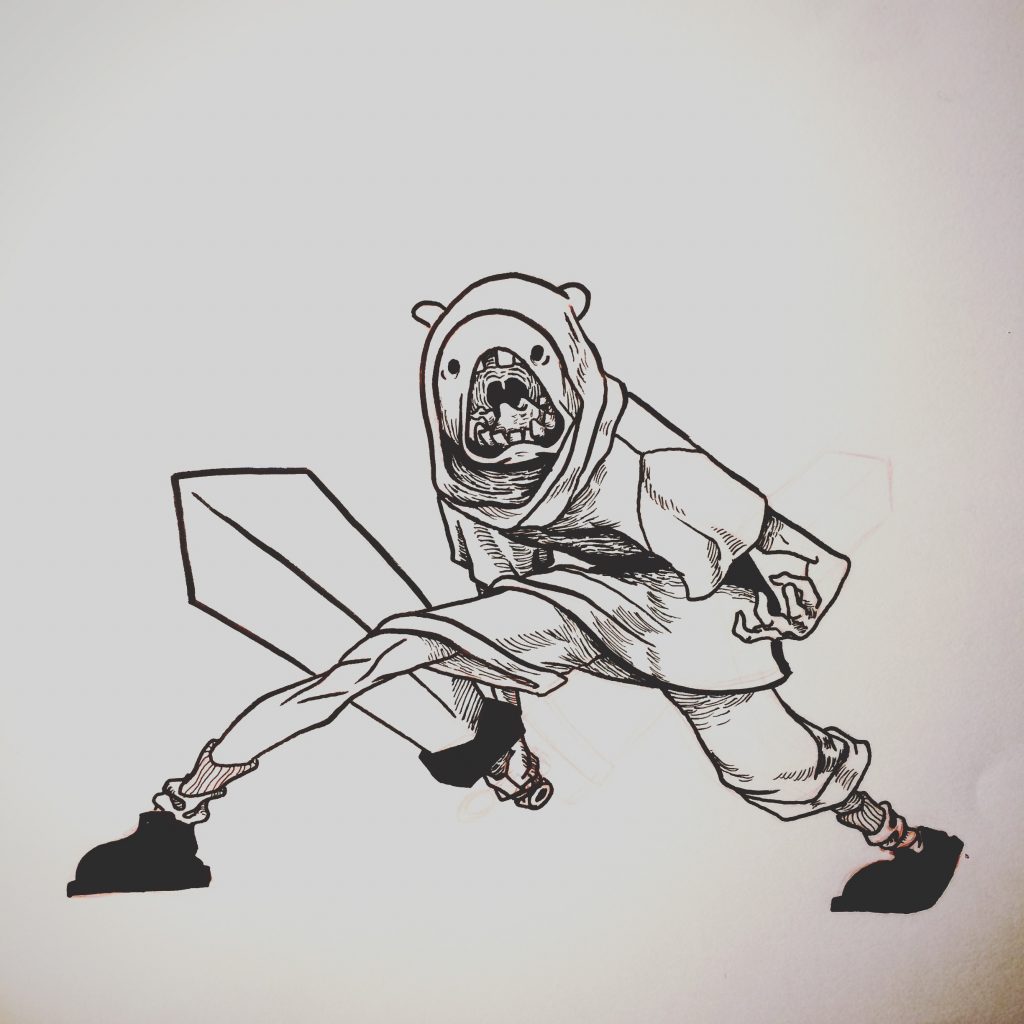
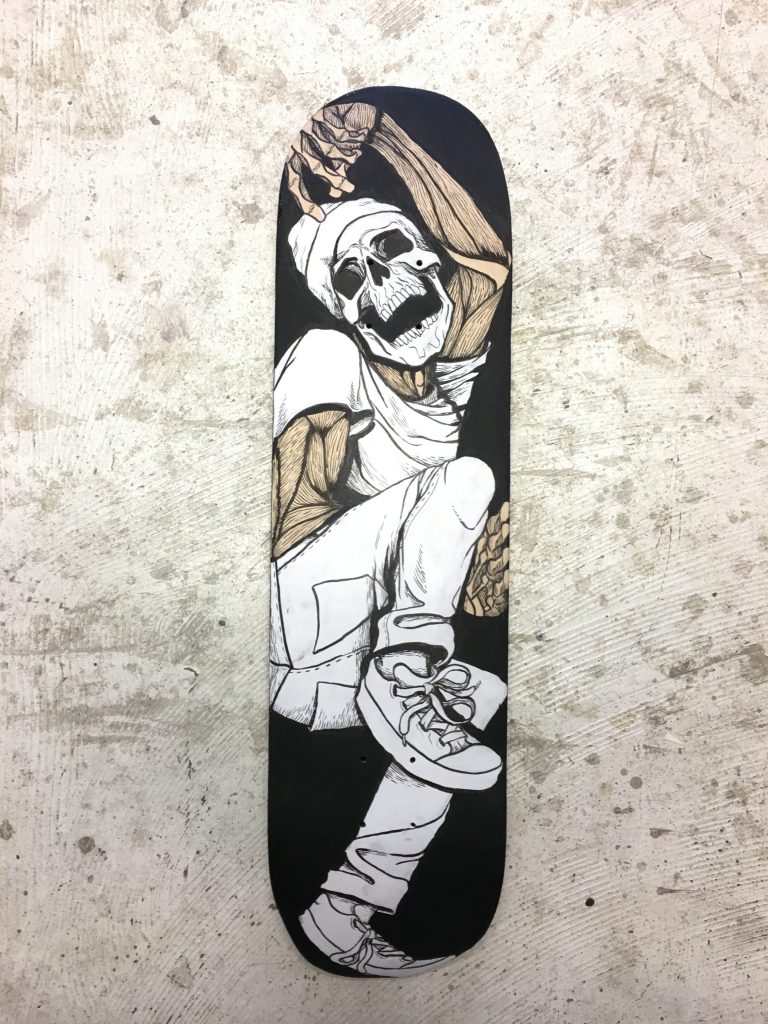
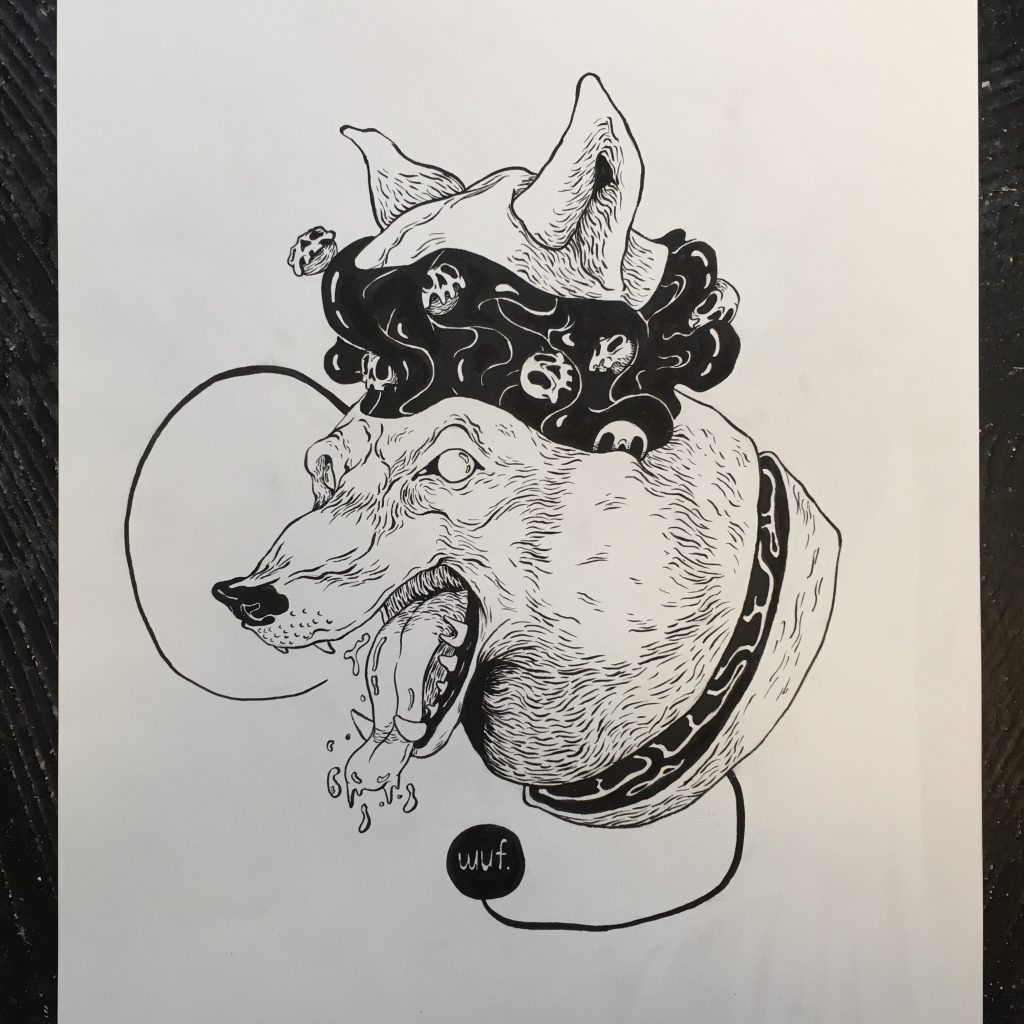
── And now that we speak of your style, which is based on blacks and darker art, how would you describe how your style has evolved? Especially from when you started to draw as a child.
Oh, that is a good question. I think the one consistent thing over all those years is the fact that I always used black and gray, such as only pencils, sharpies, markers, fine liners - that's it. It was always the most fascinating thing for me. Even at the Art Academy I mostly focused on using ink, gray wash and east indian ink. Sure, I experimented with everything because it was mandatory, but I always fell back to specifically working with black, ink and all that. So I think that is the most consistent part. And when it comes to my style in terms of what imagery I use or concepts and ideas I usually take on, I think that I grew more after I went to school because in some ways that's when your personal style and also your personal fascinations start to grow. Because when you're in school, you're taught what you need to like or what is good and what is bad. I had the feeling that during that time I didn't really have my personal taste, but only felt that something was supposed to be good. For example, I graduated with a graphic novel, a very small one, and I took some inspiration from Frank Miller, who’s a writer and comic book artist and he is most known for his own personal work of "Sin City“. So one of my teachers told me to investigate that. And then I started to dive into his works a lot more and thought “okay, so his work is good because my work kind of resembles that and because I find that fascinating, so that is supposed to be good”, and I still believe it of course, but when you don't have the trouble anymore of someone actually telling you what to investigate or not, what to dive into, your view is getting a lot more broader in a sense.
Especially with social media like instagram, where you see everything. That’s when I first started to notice that everything is a lot different than how it was when I went to the Art Academy. And that's when I really started getting fascinated by certain things like Japanese stuff or imagery of Greek mythology or Norse mythology. I think that's when I really started to see and find out what I personally find fascinating and not necessarily what is supposed to be fascinating for my work. If that makes sense.
── Of course! That makes a lot of sense. When you think back, your style and the way it is now, what is the inspiration behind it? How did your style come about? Did you remember what sparked you to decide “this is what I want to do!“?
I think truthfully it really started to “kick off” when I actually started my tattoo journey; becoming a tattoo artist. Because before that, in the small period between me graduating and starting a tattoo apprenticeship, I was working full time and I had a small studio I was sharing with two other old classmates of mine…
as an illustrator your boundaries are limitless
── What work did you do? As an illustrator?
Yes, as an illustrator. Or rather, it wasn’t necessarily like a working studio, but more like a private work place where we could just do our own thing. And the other two had somewhat more of a success, because they actually had some clients to work with. One of them worked for a magazine, and the other for a newspaper, so they actually had some client work and I was just sitting there drawing, in my spare time. And I was just drawing whatever I thought was fun, just to build up my portfolio. My girlfriend said “just post it on Instagram. You never know what comes with it. Just post it!“ So I thought “okay, sure, whatever“. And I just drew whatever I was drawn to, such as a skull or a wolf. And then I started my apprenticeship and that’s when I got this more broader view of what is happening in the world of tattooing and especially nowadays with personal styles. People used to do a little bit of everything and now you really see that everyone has their own style. And then I was really starting to think “so the tattoo artists nowadays really have their own style and what is it that makes me me then?“. And then I started to look to other tattoo artists which I found really great and awesome. For example, a guy in Brazil called Fredão Oliveira (@fredao_oliveira). He was one of the first big inspirations for me and I really started to look at his work, not necessarily copying it, but just looking at his work in a sense of what his style is and what he uses. He does very dark work, animals with no eyes. I thought that’s a cool element right there. Lots of portraits. I thought this really resembles the kind of things I also draw for myself. The styles aren’t very similar, but the subjects are, in a sense. So that's when I really started to grow into my own style as a tattoo artist. First seeing how it works and of course the techniques are a lot different when it comes to skin and paper, but it was that time when I really thought „I have this as my drawing style and how can I really push it to a tattooing style?“. And that was the point, especially during my apprenticeship days, when I really started to grow.@fredao_oliveira). He was one of the first big inspirations for me and I really started to look at his work, not necessarily copying it, but just looking at his work in a sense of what his style is and what he uses. He does very dark work, animals with no eyes. I thought that’s a cool element right there. Lots of portraits. I thought this really resembles the kind of things I also draw for myself. The styles aren’t very similar, but the subjects are, in a sense. So that's when I really started to grow into my own style as a tattoo artist. First seeing how it works and of course the techniques are a lot different when it comes to skin and paper, but it was that time when I really thought „I have this as my drawing style and how can I really push it to a tattooing style?“. And that was the point, especially during my apprenticeship days, when I really started to grow.
── And what was the reason for going into tattooing? Because not everybody who is an illustrator goes into this direction, what was your interest in tattooing?
Well to be honest it wasn't really my personal interest. I had a fascination with the tattoo lifestyle of course, I had some tattoos on myself as well back then, but it wasn't necessary that I thought that it is something I should pursue. It was my girlfriend who actually encouraged me to maybe do something with it. Especially because she said something like ”hey, maybe your work is really good for tattooing“ and I thought “I guess? I don't know?“. And so she started pushing me a little bit into that direction. In a good way of course. So, she and some of my friends even gave me a tattoo starter-kit with two cheap machines and a pair of gloves and some needles, just to get me going. Which was very nice of course, but I was so scared to touch everything, because I had no idea how this worked so…I think I pulled it all together one time, then started the machine and got scared, thinking “no, I really shouldn’t touch this!“. I liked the idea of it, but I just didn’t think I was in the right position where I could just start tattooing. I didn't have the courage to do that and I had no idea what to do with it anyway…And I think not long after that I got to know Hanne (@hannesmit), who is one of the owners of BlackBear Ink. We were both modeling for a common friend of ours, which was very funny, but a bit weird (laughs)… But anyway, we got to know each other, she saw my work and I saw her work and then not long after that moment I got a message from her, saying “hey, we are looking for tattoo apprentices and I remembered your work and I really liked it, so would you like to come by and have a chat with us?“. And I immediately sent it to my girlfriend like “I don't know if you have something to do with this, but I think it's happening! I think that the course you’re trying to set me on is actually happening right now!“ And so I went there and I never stopped going. I came and I stopped there.
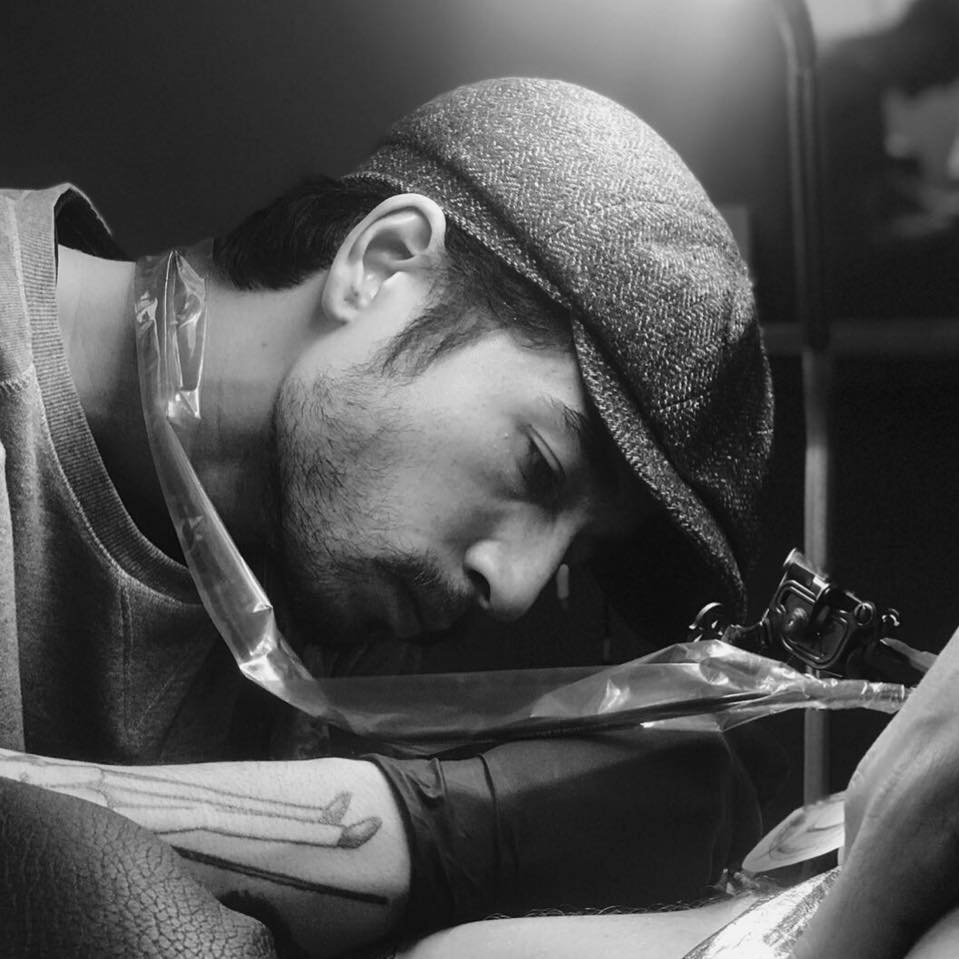
── You never left.
I never left. Exactly, yes!
── What were the first struggles for you? How was it to start out? Because you said you were afraid of touching the kit, what was it like actually doing it on a person then? I think it must have been even more stressful.
Yeah! ….Yeah. I was always self-conscious about things and very insecure, especially when it comes to work, so the fact that my work had to come onto someone's skin was terrifying for me. The whole idea that I had to harm someone to get some picture of mine on their skin was like “oh I don’t know if I can do this. I don't know!“. But I think Kevin (@broke.kek) and Hanne really helped me along the way, especially in my early days. Just easing me into the process. They gave me a lot of knowledge and they did a really good job teaching me the entire craft before I even started scratching some skin. And I remember that there was one day, when I didn't think I was ready, but apparently I was. Kevin said “oh by the way, you can ask around some friends or family members and you can start tattooing them, if you want to“ and l was like “oh no, it's happening. It's really happening right now“. So that was the actual first struggle I had, overcoming that boundary of actually tattooing someone. And my first tattoo was also on a guy who is now a great friend of mine. He didn't have any tattoos either, so it was a first for both of us (laughs). We were both kind of nervous and we both were like “okay, let's just do this. The only way through is forward“ so we went on and did it.
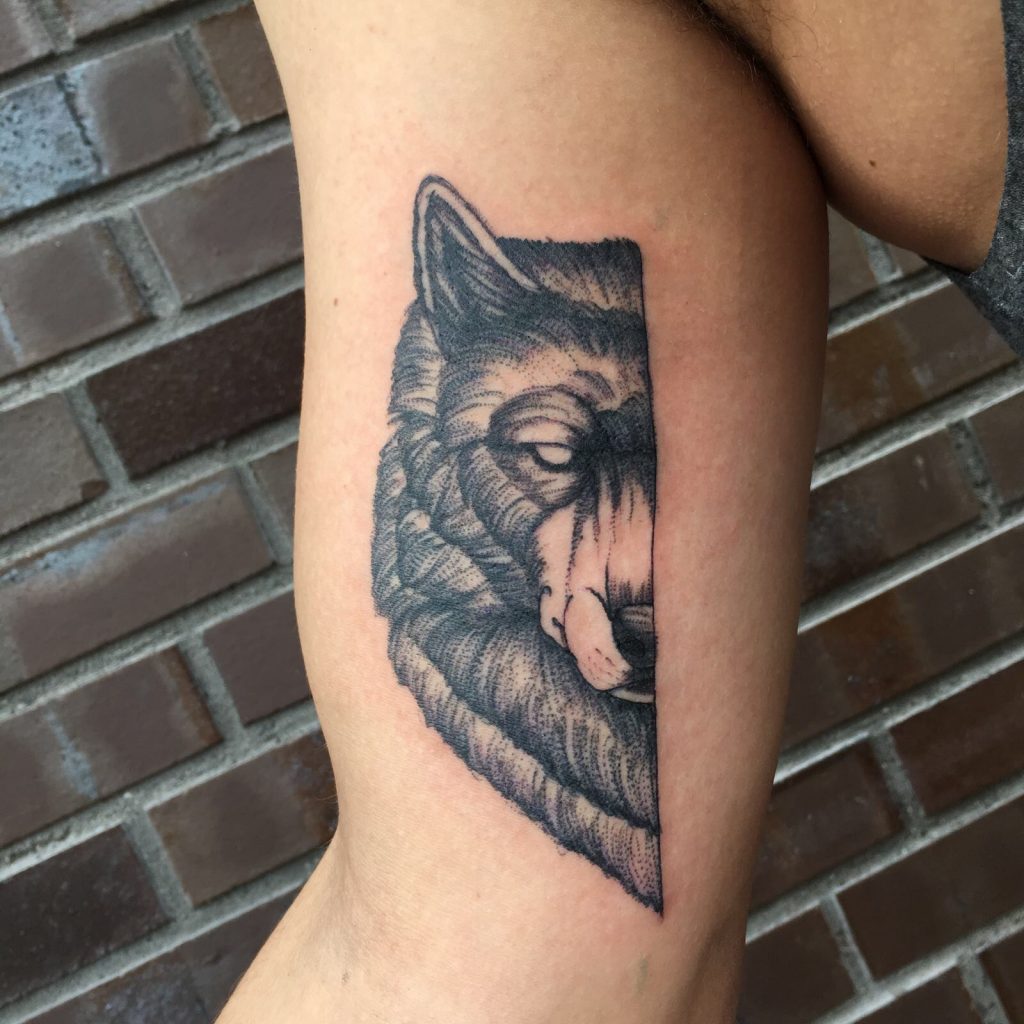
Then after that, I think maybe five or ten tattoos later, it became easier accepting the fact that this is the process. Yes, you're hurting people, but if you do a good job, then the results are all well. Besides that I think the biggest struggle for me was finding a great deal of balance between how my compositions work between something on paper and something on the skin. Because as an illustrator your boundaries are limitless. You can draw whatever direction you want, depending on how great your piece of paper or canvas is. When it comes to tattooing, you're working on bodies: body parts like arms and legs and backs and necks and such, so that was a very difficult transition for me to work in a way that my compositions have to work on a body part and not on a flat surface. And the last thing that was difficult for me was learning how contrast works. Because when it comes to contrast on paper or when you're just drawing, you draw something and that's the way it is. What you see is what you get. But when it comes to tattoos, ink flows a little bit in your body, because your body is a living organism and so is your skin, it lives and it moves and it gets older. So those are things you really need to understand when you're working with tattoos. And in my early days I didn't really understand that the contrast you make during the tattoo session doesn't necessarily stay that way over the time of five or ten or fifteen years. So I really needed to learn that contrast is a very big element and you need to keep your open spaces and readability and all that. And those are all things that I'm not necessarily still struggling with, but things that I’m keeping in mind. I just try to keep evolving in a way that I never want to stop learning. I just want to keep improving on that. On making it more visible, make it so that it doesn't matter how old the tattoo is, it still looks like it was done yesterday. I don't think it will ever work that way, but it's something to look forward to.
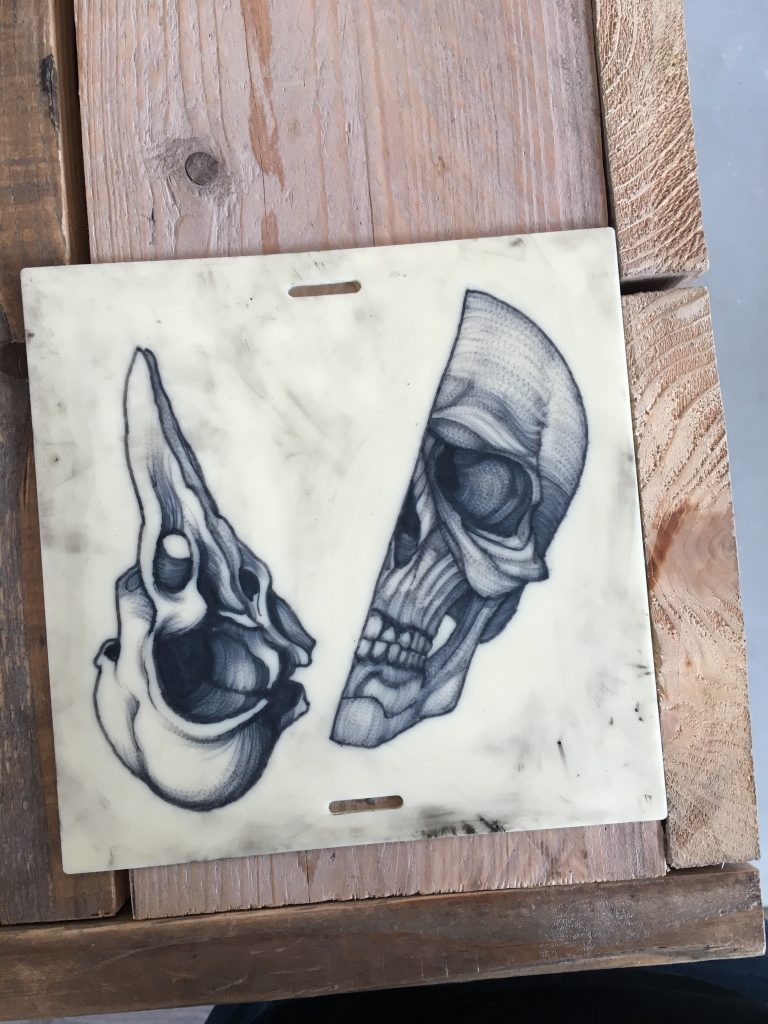
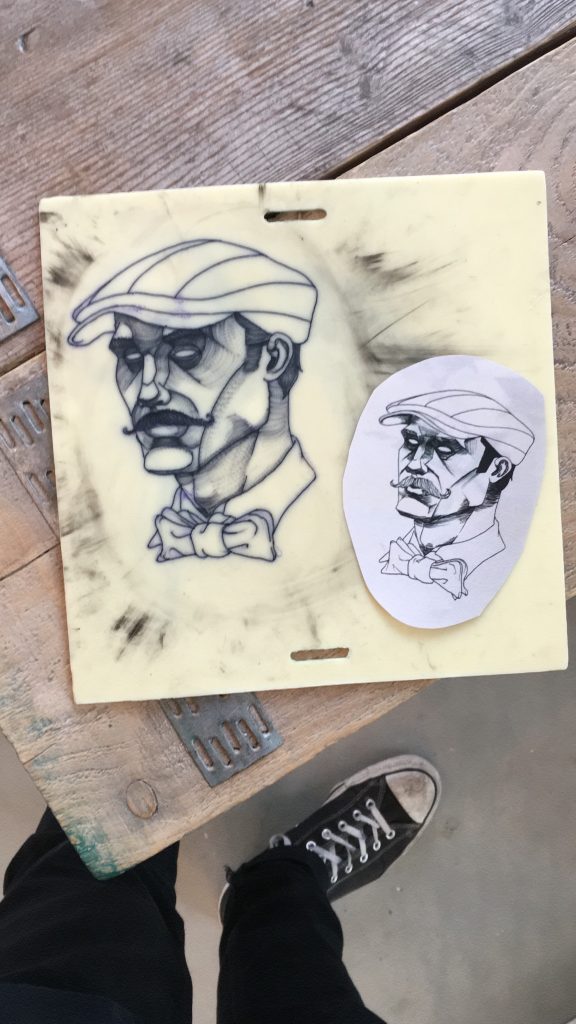
── In the tattoo industry there are also the terms tattooer and tattoo artist. Do you make a difference between these terms and what do you consider yourself to be? Are you a tattooer or a tattoo artist? Or both?
Well, actually if I'm being honest, I don't really like the term “artist“ because it sounds like it is like a self-proclaimed title or something, you know? And I don't like the idea of it. On the other hand “tattooer“ is maybe more of a job description. The same way you're saying “I'm a graphic designer“ or “I’m an illustrator“. So in that sense “tattooer“ might be more fitting. But it also sends a signal like “I just do tattoos“ and you don't want to give the impression, when you're explaining your work to someone else, that you're just some simple –not in a negative way of course– “simple” tattooer, who does anything. You really try to communicate that you're actually a specialized artist in a specific style. So in that sense “tattoo artist“ might be a more fitting title. But on the other hand it does sound like you're making yourself a bigger deal than you are. I don't know…because it's not like when someone is like a very good web designer and they’re saying “I'm a web artist“. So it's a very weird term to give yourself. Most of the times when people ask me what I am, I still just say “I’m an Illustrator who also works as a tattooer” or a “tattoo artist“ but I don't really cling to the title “tattoo artist“ like that is who I am. Because I don't really like that “artist” part of it.
the best thing about my work are the smiles on everyone's faces when they look in the mirror and see their tattoos
── That makes a lot of sense. And now that you mention it, because tattooing is your main job right now, do you still find time to illustrate or draw outside of your work? Is it still important for you or do you feel that tattooing is already enough for you to express yourself creatively?
It is still a very important part of me - drawing in general. But like you said yourself, I don't really have the time anymore to draw just for myself or to draw whatever I want to. I really want to do it more. Maybe I have to make more time for that. But on the other hand, I never have the feeling that drawing for customers is taking a toll, in a sense that I can't have the creative output anymore. It’s still always fascinating and fascinates me. It’s still driving me to be my better self. But I do miss having time to really just be creative without the restrictions or obligations of doing something for someone else. Because as a tattoo artist it doesn't matter what you do, you still have to do it for someone else. Which is fine and I really love that about my work, because the best thing about my work are the smiles on everyone's faces when they look in the mirror and see their tattoos. That just warms my heart. That is really one of the things I am really doing this for. But on the other hand, the main reason for doing it, is for creating, for drawing and all that. And that is really something I miss nowadays: sitting down, doing my thing and not having to worry about anyone liking it other than myself. So I really miss that sometimes, but I can still find a creative outlet when it comes to my work.
── Awesome. And when you look at your work overall, who or what inspires you the most?
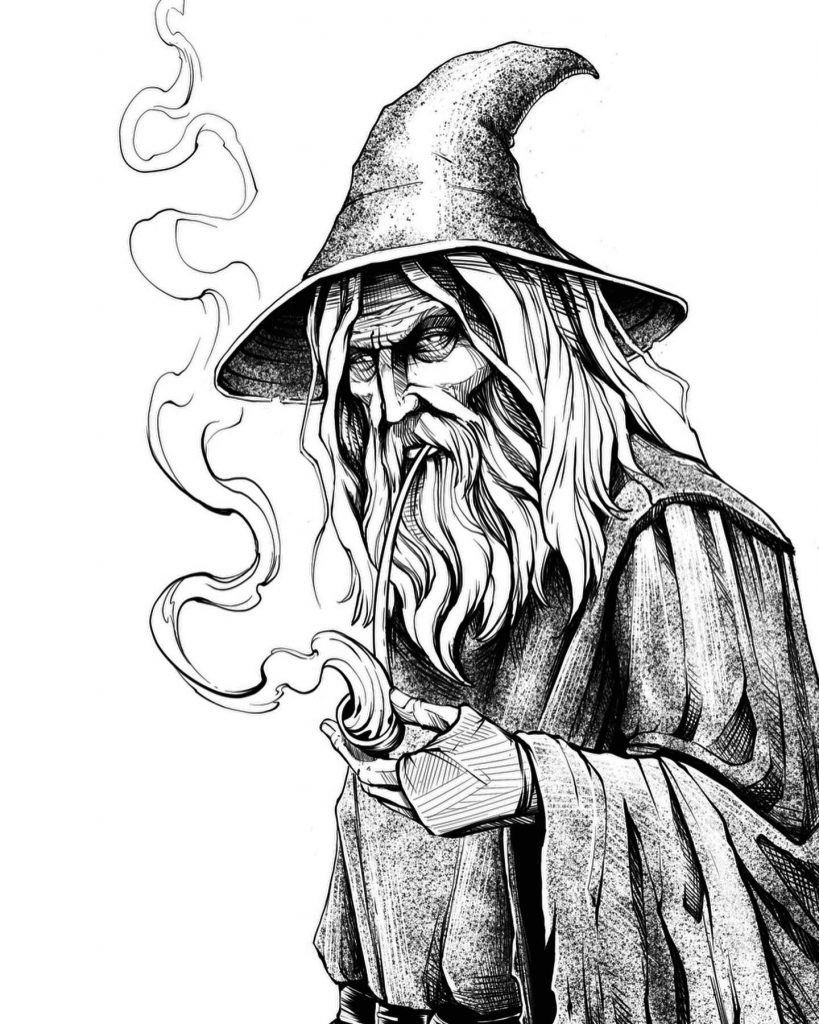
There's something I can do for like an hour on end: just being on Pinterest or Instagram, seeing other people create their work and saving it for later. And then at that moment when I have some time or need to get inspired, I just browse through all that work. I don't even remember who it is from or what style it is, I just like the image or the way it flows or how it looks or the contrast. But most things that really inspire me are things out of mythology. Like Japanese mythology, Japanese culture, a lot of fantasy stuff; I'm a very big nerd when it comes to that. Dungeon and Dragons or manga or anime, movies, comic books. Those are all big sources of inspiration for me and I try to browse through them as much as I can.
── And now that you mention it, because this interview will also be published in Japanese, and I know you are interested in Japan, how did it come about and how did you get interested in it?
In Japanese culture?
── In Japan and in Japanese culture.
That's a good question. I think it was when I was very young. I started doing karate because my father was a karate master in his days and he suggested that I do it too, so I started doing that. And I was very young so I didn't really have any knowledge about what the sport was or where it came from, I just liked doing it. And when I got older I started to understand it came from Japan and then I started to learn a thing or two about Japan, and I thought “okay that's nice“, and then came anime and manga and I was like “oh I love this!“. I also loved the way the language sounds, and then I started to learn more about Japan and found it really fascinating. That fascination just grew from a lot of standpoints. For example, karate, anime and manga, also the food. I also remember one of the first books I actually bought about Japan, which was about Bushido, you know “the way of the samurai''. It really fascinated me and I loved the discipline, the principles. The fact that it was a country with not necessarily strict, but strong principles and living in those codes of honor - I really loved that about it. And it all got confirmed for me when I actually visited Japan for the first time. It was exactly how I imagined it. It was somewhat of a culture shock, sure, but in a good sense, because everything was structured and people were nice and humble and it really proved the point I was thinking all along. And that’s when my fascination for the country only escalated in a sense.
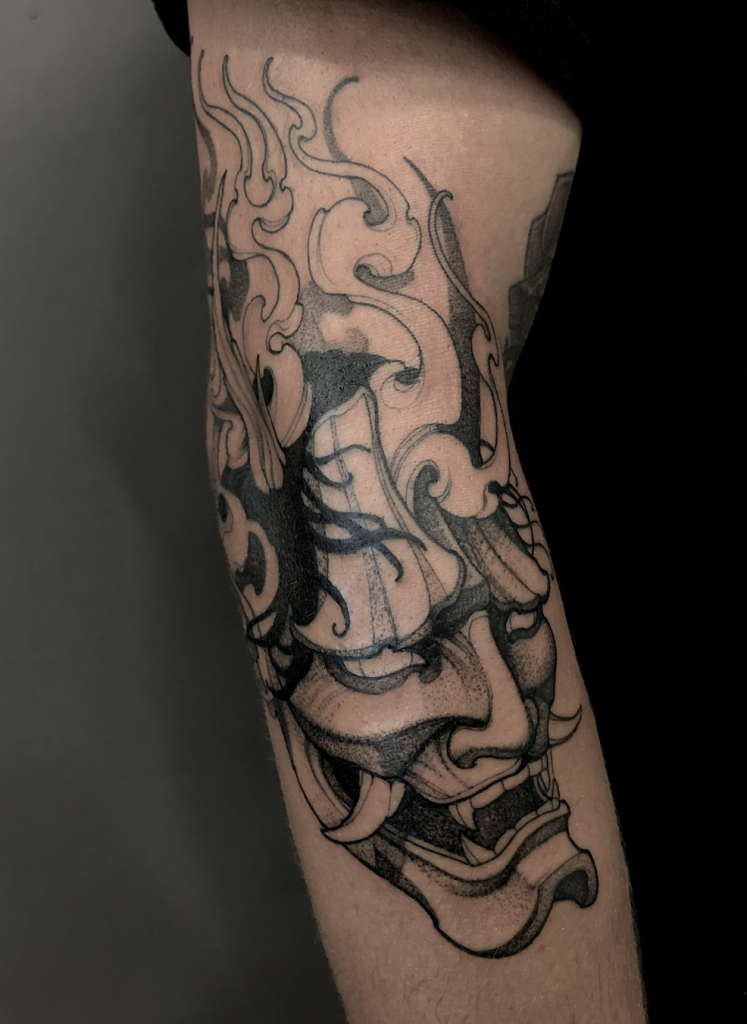
And when I look at your art, sometimes there is some Japanese imagery in it. What do you like to draw from Japanese imagery? What is your inspiration there?
I think mostly when I look at classical Japanese tattoos…I look to those images a lot for inspiration. Especially when I have to actually draw a Japanese dragon for example, I tend to look at Japanese dragons and not necessarily dragons in general or how other western tattoo artists do them、but rather how it looks when an actual Japanese tattoo artist makes them. And that is something I really love doing: Japanese dragons, Hanyas - the masks, and everything that has a little bit of that folklore and mythology vibe to it. That’s really what I love about it. One of my best friends from Amsterdam, Mesa (@meesttr) is also a Japanese tattooer, but more in a blackwork kind of sense. He tries to do it all in that look and the vibe of his tattoos are like classical Japanese, but it is made in a way that it's more like blackwork and not necessarily with the bright colors and very thick outline. He also sometimes gives me tips like “hey, you should check this work out“ or “hey, check this out, so you really understand how Japanese tattooing works” or ”their work is really cool” and this is where I take my inspiration from.
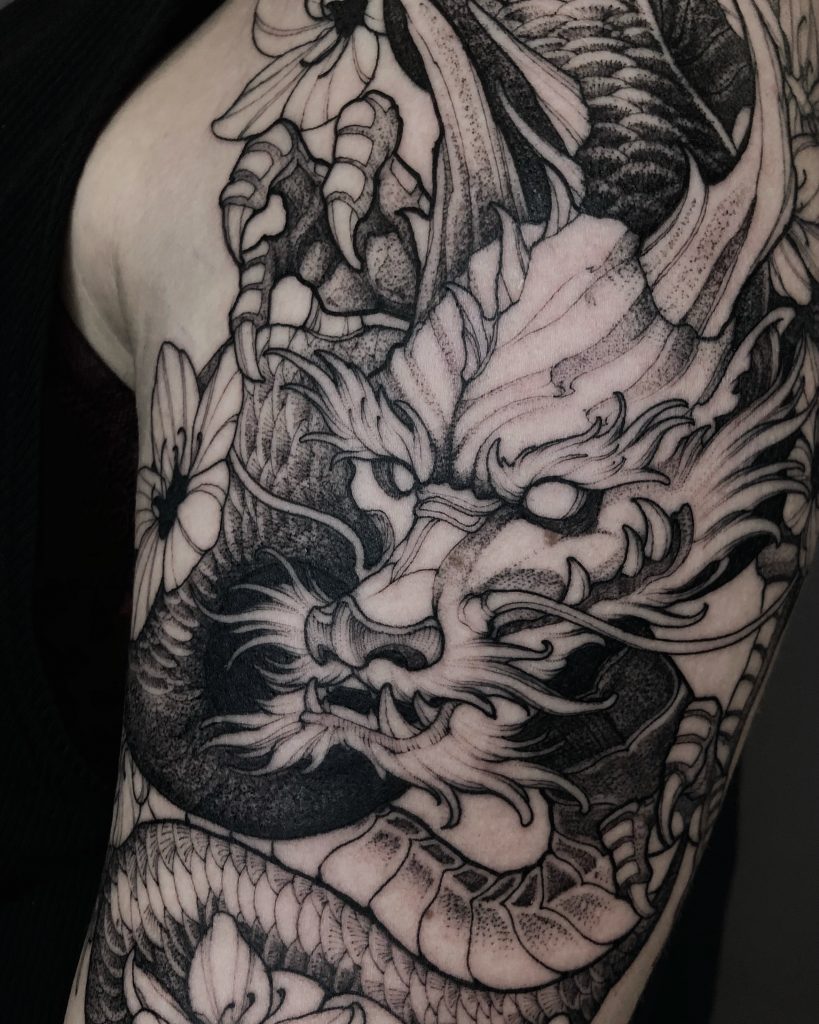
── Amazing. And you already talked a bit about it but what is your favorite medium to draw?
Ooh, mostly ink, as well as East Indian ink. That was my favorite medium back then and I rarely use it right now, but I think when I pick it up again, I’ll instantly fall in love with it again, because I mostly use an iPad nowadays for drawing. Basically for the fact that it’s functional, especially for client work. You can just easily and quickly make something, redo something and make changes, if necessary. But it's not necessarily my favorite type of medium, because it's just all digital, there's no actual feeling to it. So if I ever have more time or make more time, I think I would take up using ink again, use some paper and just ink all the way.
── Where do you buy it? Do you have any suggestions or recommendations for the readers who are interested in getting into it, and want to try it out?
Yes, mostly I used to buy it at our local art store. They have these very small East Indian ink jars and that’s what I always used. And if I wanted to use gray-wash then I just took a few cups of water and put a different amount of ink in them and filled them up with water into different shades of gray. Which is also how gray wash in tattooing works. But I always bought my stuff locally. I didn't really think about quality. The only thing I cared about was “does it serve the purpose I'm looking for? Yes it does! Ok, then it’s fine, I'm happy“.
── 多くの人は新しいことに挑戦するのが好きだと思いますし、私も聞いたことのない道具なので、とても興味深いです、ありがとうございます。
So what does your usual creative process look like? Whether it's drawing for yourself or for a client. How does it start? How does an idea come to life? Do you need something to be creative, such as a specific environment? What are the behind-the-scenes?
Well the environment isn’t always important for me. I know that a lot of artists need to have that creative space, be it like an actual space or maybe their favorite drink or music or table or whatever. I don't really think it's necessary for me to actually do something. I do need it if I have an artist block or trouble focusing on what I have to do. Then I really try to accommodate myself in a way that my creative thinking is stimulated and not distracted. But most of the time I just start with a blank canvas - like everyone does. When it comes to client work, I just skim through all their information and depending on how much information is given I study it. If they want a snake or a wolf or a deer or something like that, I look at the imagery they're sending. Some people just send one or two images and it's not necessarily something I need to hold onto, but more like an impression. And there are some people who just give me a folder with 10 to maybe 20 images or like an entire PowerPoint presentation: “this is my idea and these are all my inspirations”. And I can work either way, which is fine.
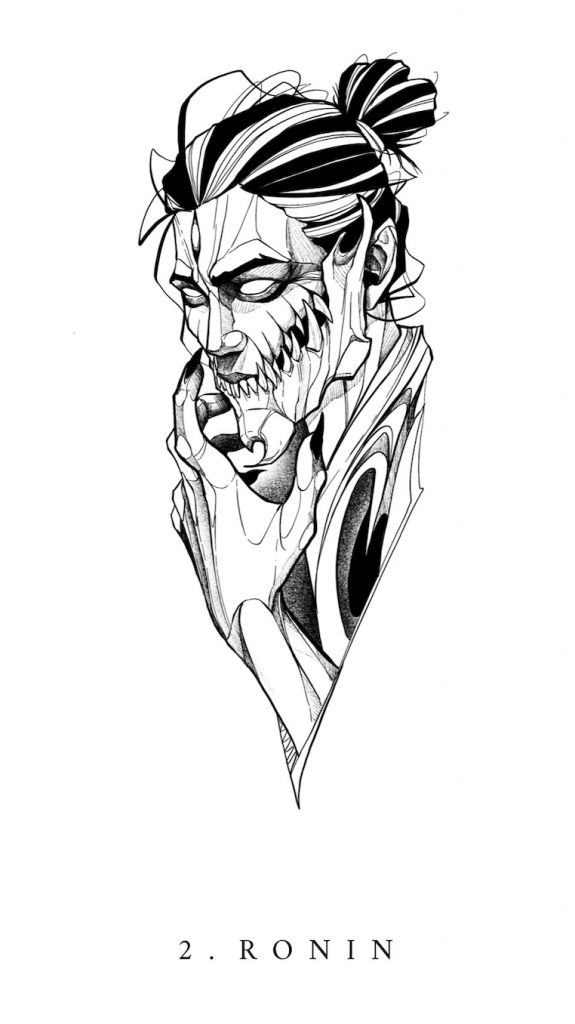
── Which do you prefer?
I don't think I have an actual preference. I think it's easier for me to work with less, because then I'm not necessarily thrown into a certain direction. Because when people give me a lot of images, it always tends to look a bit the same; maybe the same composition or style. Then I get a clear sense “okay this is something they really want“. And when people send only one, two or three images, then I know that this is their basic idea, but I can have my own way with it. That's a lot easier or…not necessarily easier, but I prefer it a little bit more that way, because I have more freedom. And then once I get to know what their ideas are I just start sketching. Just sketching all the way. Sometimes it takes five minutes and I’m like “ah! There it is! Let’s just work on this.“ and sometimes it can take up to 2 hours, just sketching all over “no, it doesn't feel right“, “no, the flow is wrong“. From there on it is just pretty standard of just sketching and reworking the design all the way to the end point. As for my process when it comes to my own work, like when I'm just drawing for myself, for example maybe flash work which is me just doing some drawing: most of the times I just sit down, have some coffee, or tea depending on how late it is of course (laughs) and then first I just browse through all my folders of inspiration. Not necessarily looking for anything, but just browsing to the point until I get like a prickle in a sense that I feel my creative high, and then I just start working. And most of the time I'm not actually working towards a goal but I'm just making shapes, something abstract and then trying to find something in the mess and then there might be one, where I know we are going that way. Maybe it’s more freeing in a sense, because I'm just doing it for myself, so I don't have to go anywhere. And then I just rework all those areas until I have some concrete imagery where I feel like this is what I'm going to work with. Other times, especially when it comes to flashes, for example the flash-day that we just had yesterday, I try to think more conceptually because especially the flash-days we organize are sometimes based on a concept, especially when it is for a charity case for someone, so we try to think in concepts. And when it comes to thinking in these concepts it’s like "okay this is the concept for this flash-day, how can I use this concept for my drawings?“. And that’s when I think more than drawing. I just try to think of images, maybe something with a raven or something like this or something with that. I write them all down and just start sketching based on those ideas. And sometimes I have to scratch some ideas and sometimes I get new ideas based on something else entirely and then I work through all the steps again until I have five or eight flashes.
── And how long does it usually take for you to finish a piece?
just do anything. That really helps me a lot going through this artist bocks. Just keep on working on it.
Depending on the complexity of the idea sometimes I'm done in two hours. Sketching and making the design. And sometimes it can take up to 6 hours! It really depends on the idea or the day I'm having. Maybe I've had a very slow day and it all just doesn't come to me easily on that day. Which is very ironic because sometimes designing or drawing the design takes up a lot more time than tattooing itself, because once you have the design, you just copy and paste it. Just making it more pretty of course. The drawing part sometimes takes up a lot more time than the actual tattooing. Unless we’re talking about a big body part, like back pieces for example. That's just your design blown up four five times.
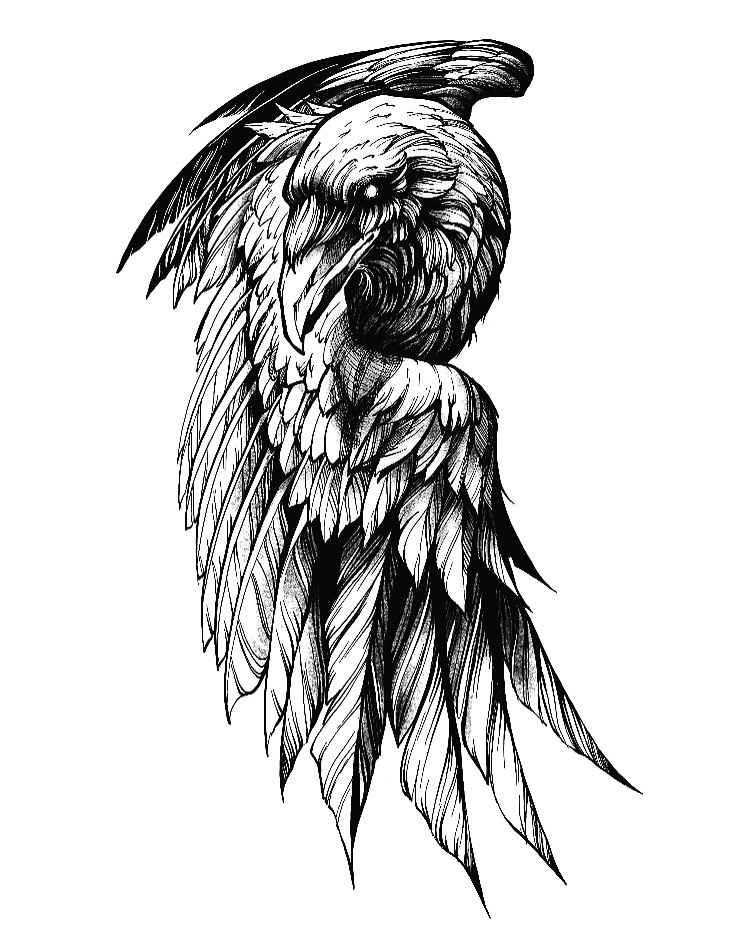
── That takes time.
That takes a lot of time, yeah.
── And now that you mentioned having a creative block, I think no matter if it’s music, art, anything, everybody knows creative blocks. How do you deal with it? Do you maybe have a tip or advice for people starting out, how to deal with it? What's your personal way of dealing with creative blocks?
I remember when I was at the Art Academy I have had some of these for days or weeks, especially because you feel pressure. For example a teacher is saying to you that you need to deliver 40 sketches on some subject because that’s something you want to research, and then you're like “Ugh, 40 sketches. Okay, I have no idea where to begin“ and you feel the block coming. And when I was younger I sort of gave in to the fact that I had this artist block and there was something actually in front of me withholding me from doing anything. And nowadays I'm realizing there are some moments where I just get stuck, where nothing comes out. But I think the best way for me personally to deal with it is just keep on making, keep on doing something. Even if it doesn't resemble anything you want to accomplish. For example, if I have to work on a Japanese Dragon for a customer and I'm sketching and sketching and nothing comes out of it, I have no inspiration or there is no flow, I’m realizing I’m having an artist block, because nothing comes out of it and anything I do is absolute garbage, then I just try to power through and then eventually something will come up, even if it's something small and then you will get inspired again or you find the drive to just go through it. That always helps me. And if it doesn't help with project based designs, then just start drawing on something completely ordinary, like something for yourself, or make a scribble: just do anything. That really helps me a lot going through this artist bocks. Just keep on working on it. Because if you stop and accept that you’re having a block, and that you can’t do anything, that doesn't really help you in any way. So for me it always helped to just power through. Which is hard, of course. There are times where you don’t know how to do it, but you just have to keep on going. Even if it's just small things or maybe for five or 10 minutes - just power through.
── That’s amazing, because I think as a creative person you often tend to feel like “okay, I don't know, I just stop“ and then you don't know how long it will take until motivation or inspiration comes back, so it can be dangerous. You are working with clients who have appointments. If you just wait for inspiration to come… It just makes sense for you to just find another way to deal with it. That’s really helpful.
Yes exactly, it's really important! Because, like you said yourself, people tend to just stop what they're doing and just wait until the creative block is over. But that block doesn't just magically stop. What I noticed is that when other people are having it, they just tend to wait and then for some reason the block is over and they just can start working again. But if you just do that the moment you notice you’re having it, then you don't have to wait any more. You can just push through. It’s a lot harder, of course. I understand that it may take a while and become frustrating, but I think it helps a lot more than just waiting it out.
── Makes total sense. I love this advice. Speaking of struggles, what's been your biggest challenge that you faced on your creative journey? Whether it’s illustrating or tattooing, what is the biggest challenge you've had to overcome and how did you overcome it?
I think the biggest challenge, which I'm still facing to this day, is balance in the sense of mental health and working on yourself and working on your craft. Because I tend to think of those two things as one of the same: If I work on my craft I feel happy and I'm happy because I work on my craft. Especially when it comes to tattooing. It can take a big toll on you when you're tattooing for 4, 5 days a week and then drawing for 1, 2 days a week, which leaves you with some few hours during the week and a day on the weekend to have actual time off. It takes a big toll on you, especially on the days when you're actually feeling tired or when my girlfriend says „hey, we don't have a lot of time anymore, so shouldn’t we do something?“ and you start to notice “I’m putting all this time and energy in my work, in my craft, I have to try to balance it out“. Especially when it comes to my personal life. It’s okay to take some rest or take a step back or to say to a customer „I’m sorry, I'm getting overworked, so I think we might need to postpone it“. It’s something that, to this day, I still really need to learn, because it's really hard for me to say “no” or find my personal boundaries when it comes to saying that I’m going to stop, I’m having enough or I need to chill down for a minute. So that is the biggest hurdle I'm still trying to overcome.
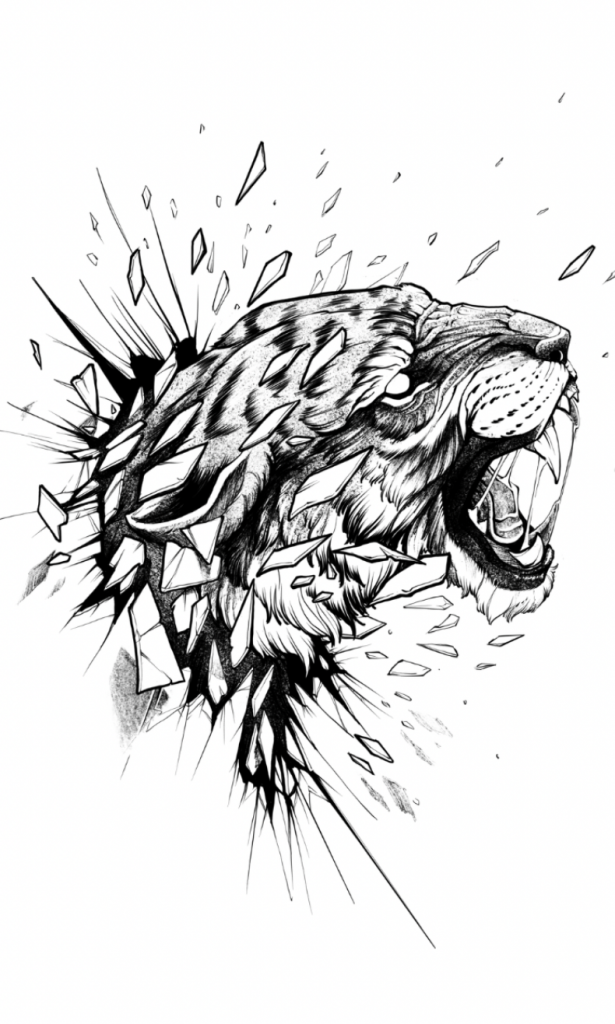
── What helps you do so?
I think it’s other people around me. They tell me: “hey man, you need to chill down for a second, because you're really doing too much“ . And if I'm being truly honest to myself, most of the time I'm not even listening, just saying "yeah yeah yeah" and the next day I’m just doing my business as usual. But especially when my girlfriend is saying, for example: “hey, maybe we should do nothing for today. Don’t see anyone, just you and me, chilling, maybe go out for dinner or something, just us" and on those days I can actually feel rest coming to me and that I needed this. People around me are driving me to just chill down. They are the biggest help for me when it comes to overcoming that hurdle.
── I think that for creative people it’s common to have this imposter syndrome, feeling not enough or having not done enough. I think it's easy to get stuck in this creative fog, feeling “I need to do more - it's not enough. I cannot rest until something happens, until I feel I deserve rest“.
Exactly! Yes, that's something that…of course some people have it worse than others. I tend to have it on the worst side, because my girlfriend and even my colleagues at work say things like “hey, maybe you should just work a day less, so you have a day extra for doing your drawings and your designs. Which automatically gives you a day extra on the weekends, which gives you more time, gives you a lot more space in your head and maybe some rest”. And I know that they are right, but on the other hand I feel this nagging voice in my head saying “You’re only working for three or four days which isn't really enough. What if people think and say that you're just lazy? That I really have a good life just working three or four days a week.” Exactly what you're saying, I feel this imposter syndrome coming up: “you're not doing enough, you need to work harder, you need to show people that you really love to work hard on something” and I then totally tend to forget that it's a good thing to chill and take a step back and take some time for yourself. I tend to forget that a lot. Definitely.
── It is really important that you mention it, because I think that it’s something everybody, every creative person and even people from other industries, go through.
Yes, definitely.
── And on a more positive note, what would you say is your biggest achievement until now that you’re proud of? But forget the imposter syndrome (laughs).
Haha (laughs)...My biggest achievement…That’s a good question…it's really difficult…I think the biggest achievement to this day is when I went from apprentice to artist. Back when I was an apprentice I wasn't worrying about titles or anything. I was just worrying about doing my work as well as possible. And then one day the Black Bear Ink owners Kevin and Hanne and my girlfriend surprised me at Black Bear, at our tattoo shop, by sending me to the other space we have, which is a small studio where we keep all our stuff, merchandise and such things. And they lured me there and then all the sudden all my friends were there and I was like “what is going on? W-w-what’s going on here?“ and that was the moment when they told me “You can drop your apprenticeship title now. You're an official artist“ . And in some strange way that meant a lot more to me than receiving my diploma for my Art Academy. I don't know why… I think that maybe it has to do with the fact that Art Academy was four years of hard work and you just wanted it to be over. And when I went from apprentice to artist it was some form of validation, like “You did good! Your work is good! So here is your new title“. And that was the first time where I was like “oh wow, oh I really did it. Didn’t I?“ (laughs). And I think that's one of the biggest achievements I have so far, I guess.
── That's amazing. And I still remember, because I've been following you since you were an apprentice and I didn't even know, so once you posted that you finished your apprenticeship and became an artist, I think I even commented "how can it be that you’ve been an apprentice?!" because your art was so amazing I was shocked how that could be (laughs).
Yes, a lot of people didn't know back then. Because, like I said, I didn't really care about it. I just tried to focus on my work and the fact that I was still an apprentice or that I wasn't an artist yet didn't matter to me. As long as my work was good, I was happy. And if people are happy with my work, then that's all it would matter to me. But yeah…when it actually happened for me, becoming an artist, I noticed that this meant a lot more to me then I realized, in a strange way.
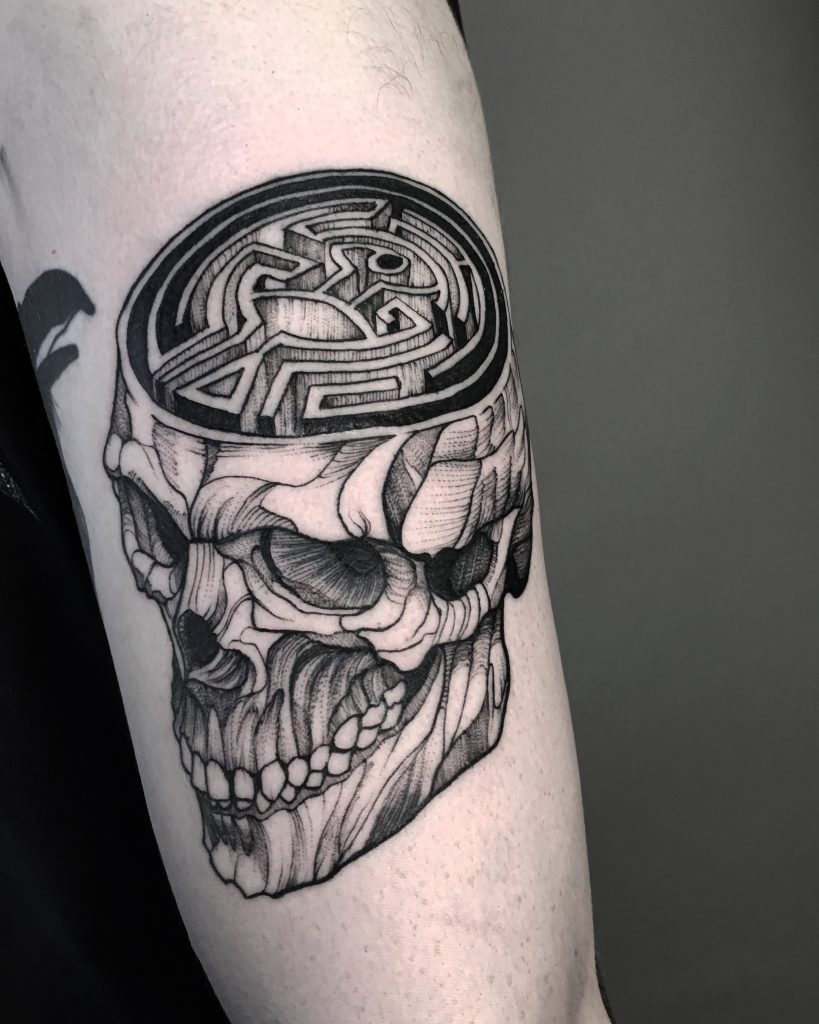
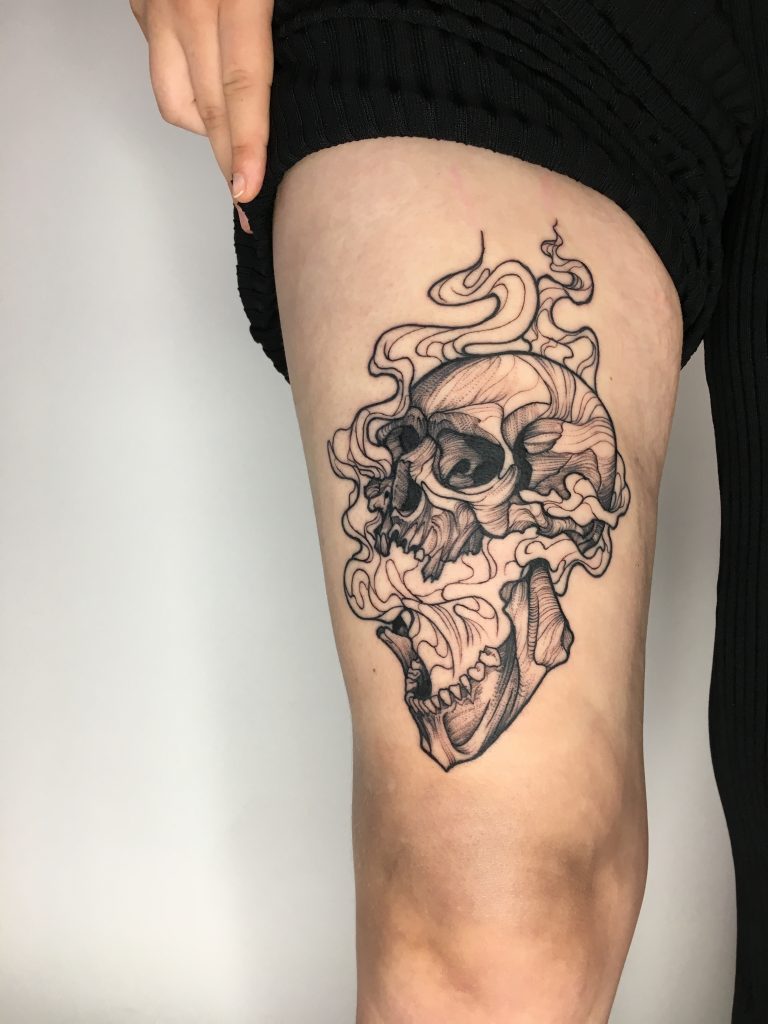
── Maybe having your friends around and people being there for you, for your journey, helped to feel that way.
I think that helped a great deal, exactly. That the people around me felt happy for me. It makes you feel warm inside. I actually was getting emotional. “Oh… oh wow.. You’re all here for me, oh wow.“ I don't know, and it was so weird and I was very happy back then. It really felt like a good achievement.
── That's amazing! And if you think of the future, is there anything you want to achieve? Maybe a goal you have?
I am not really sure. I tend not to look too far into the future, I’m just taking a few steps at a time. I would love to travel more with my work, doing a lot more guest spots in all the good places around the world. So that is something that is really on my wish list and one of the things I really want to accomplish. Not necessarily for myself as an artist, but more in order to get to know other people around the world doing the craft and learning how they do it. I never want to stop learning, I want to keep improving on what I do, so it will be awesome for me to just go to other places, for example to Japan, and get to know the true masters of Japanese tattooing. Or going to Berlin or America - New York or London. Getting to know all these great names in the tattoo industry and just see how they work. That would be something I’d really like to do in future.
── Sounds really good and I think it's very achievable for you because you're already on a really good start for that.
I hope so! (laughs)
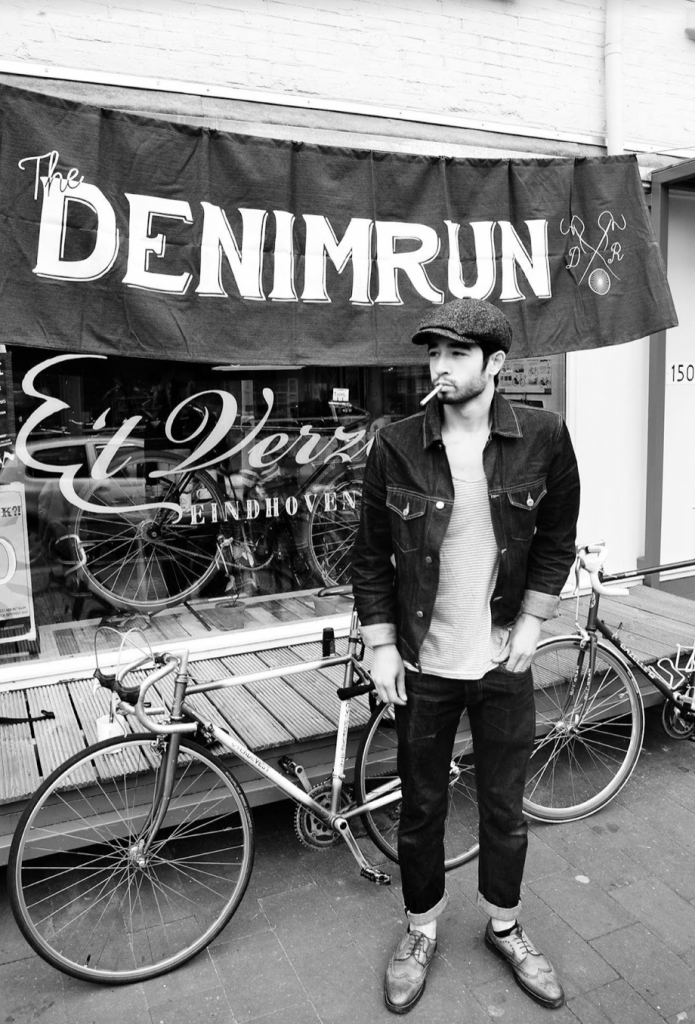
── I’m pretty sure you are! And if you could start over, would you do everything the same? Or would you do things differently?
If I could start over? If I could start over, I would probably, knowing all the things I know now, try to prevent any mistakes I made in the past while doing my apprenticeship. It may sound silly, trying to skip a few steps if I already know how to skip them. But on the other hand I don't regret anything I've done. I regretted some tattoos or some choices I made, but on the other hand it was those whole learning experiences for me which I had to go through to be where I am today. So in a sense they were crucial. So I think I would do most of the things exactly the same.
── That's great. That’s maybe the best answer, having no regrets of your past. And do you have any advice for beginners? Whether it’s illustrators or tattooers, what would be some advice you wish somebody had told you when you were starting out?
Keep practicing (laughs). Work on your craft as many hours as you can without sacrificing your rest. When I was younger or starting out, I was just trying to do as much as possible and most of the time it always crushed me in terms of my own personal mental state. So the biggest tip that I would give to beginners is practice as hard as you can, as much as you can, but never forget the fact that you're still a human being and you need to rest and sometimes just take a little step back so you can make two steps forward.
─ Yes, that’s really important. Thank you for that. And the last thing I want to ask you is what is your “why?“, why do you do what you do?
“Why”.. “Why”… saving the difficult one for last (laughs)
── Yeah (laughs)
I think the biggest “why“ is because it makes me happy. During the last quarantine lockdown because of COVID I had a kind of a breaking point, because I started to notice that the fact that I couldn't tattoo anymore, and didn't know when I could start again, was making me very unhappy, almost depressed. So I started to understand that doing my work and doing my craft is what gives me absolute joy. Like I said earlier, seeing the validation of people having smiles on their faces when they see their tattoos…that's one of the reasons I do what I'm doing. And when I can't do that anymore, it just breaks my heart. It makes me depressed and in a sense gave me the biggest artist block that I've ever had. So I'm doing this because I think this is what I have to do to keep on living. It sounds very dramatic, but it just drives me forward so it's not “why” I do it, but I just have to.
── That's amazing. I love this answer so much! Thank you so much for taking the time to be here and I'm sure it will be really really inspiring for people who are just starting out. No matter whether they are tattooers or just other kinds of artists - anybody. It’s so important, everything you said, so thank you so much for being here. I really really appreciate your time.
Thank you too for this great opportunity. I had a wonderful time and I hope it's helpful in any way it can be.
── It will be for sure! Thank you so much!
Text: Olga Mazlina
写真:Mitchell Keanu
For more information on Mitchell Keanu, please check out the sites below:
https://blackbear.ink/en/artist/keanu/
Mitchell Keanu Instagram
